- Alice Austen House
- Lewis Latimer House Museum
- Bartow-Pell Mansion Museum
- Little Red Lighthouse
- Bowne House
- Merchant's House Museum
- Conference House
- Morris-Jumel Mansion Museum
- Dyckman Farmhouse Museum
- Old Stone House
- Edgar Allan Poe Cottage
- Queens County Farm Museum

Gracie Mansion
- Seguine Mansion
- Hendrick I. Lott House
- Swedish Cottage Marionette Theatre
- Historic Richmond Town
- Valentine-Varian House
- King Manor Museum
- Van Cortlandt House Museum
- Kingsland Homestead
- Wyckoff House Museum
- Lefferts Historic House Museum
- Virtual Heritage Trail
- Partner With Parks
- Serve Our Sites
- Engage the Community
- Staff & Board
- Employment Opportunities
- Financials & Policies
- Corporate Partnerships
- Design Completed for the First Phase of a Major Restoration Effort at the Morris-Jumel Mansion
- Collaborative Effort Underway to Form Van Cortlandt House Museum Community Advisory Committee
- Historic House Trust Energized as Six New Members Join the Advisory Board
- Conference House to Receive a 2024 Award of Distinction from the Museum Association of New York
In 1799, a prosperous merchant named Archibald Gracie built a country house overlooking a sleepy, scenic bend on the East River, five miles north of what was then New York City. Now, his home is one of the oldest surviving wood structures in Manhattan and the official residence of New York City’s Mayor.
Financial hardship caused by the War of 1812 forced Gracie to sell his house in 1823. The property changed hands several times until, in 1896, the City of New York appropriated the estate, incorporating its eleven acres into the surrounding park that was renamed for Carl Schurz in 1910.
After years of use as a concession stand and as restrooms for the park, Gracie Mansion was restored and became the first home of the Museum of the City of New York. When the museum moved to its new building on Fifth Avenue, “power-brokering” Parks Commissioner Robert Moses convinced City authorities to designate the house as the official residence of the Mayor. In 1942, Fiorello H. La Guardia and his family moved into Gracie Mansion.
Gracie Mansion was enlarged in 1966 with the addition of the Susan E. Wagner Wing, dedicated to official events and public gatherings. Mayor Edward I. Koch established the Gracie Mansion Conservancy in 1981 as a public/private partnership to undertake a major restoration of the house. In 2002, the interior and exterior of the “People’s House” were again restored, with increased accessibility to the public and City agencies. Today, Gracie Mansion reclaims its place as what Mayor La Guardia described as New York’s “little White House.”
The Gracie Mansion Conservancy continues to operate as a charitable organization dedicated to enhancing and enlivening its namesake. Its mission is to preserve and honor Gracie Mansion’s Federal Period origins while also making sure it remains as forward-looking and welcoming as the city it serves. An increasing share of this work focuses on exploring the many different people and cultures whose contributions to Gracie Mansion and New York at large have gone unrecognized for far too long. The current exhibition, The Permanent Collection, highlights the contributions of these New Yorkers by showcasing the decorative items that characterize this this living landmark possible. Take an in person tour of the mansion by clicking here .
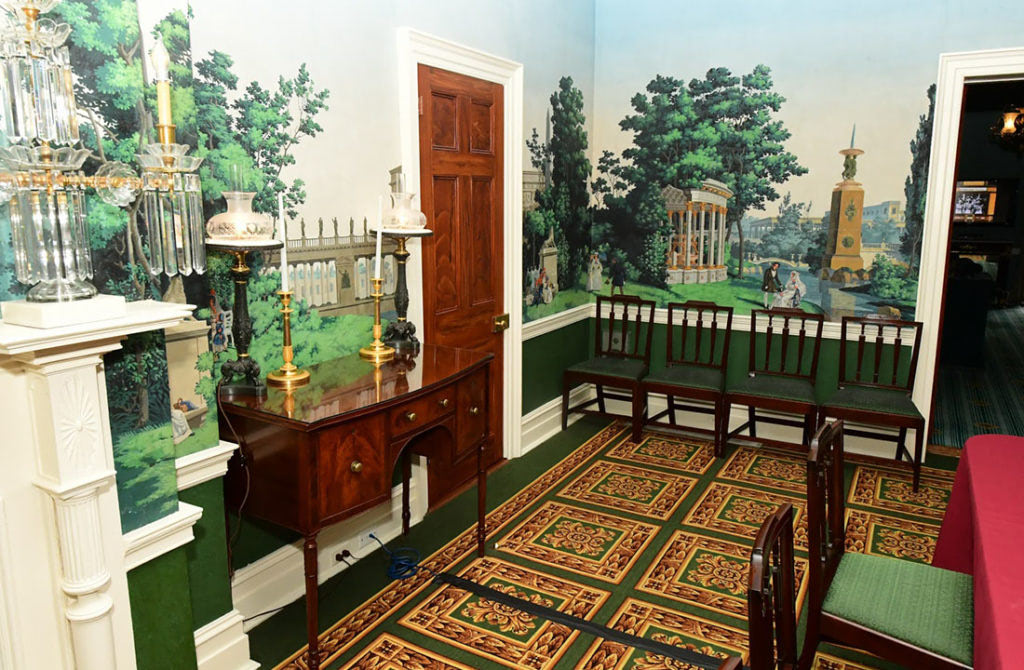
Gracie Mansion is owned by the New York City Department of Parks & Recreation, operated by the Gracie Mansion Conservancy, and is a member of the Historic House Trust.
If you would like to donate to Gracie Mansion, please click here .
Available slots on public tours are limited. Register for public tours on the Gracie Mansion website linked below. Information regarding private and school tours are also available online.
Public Tours: $10
Digital Content
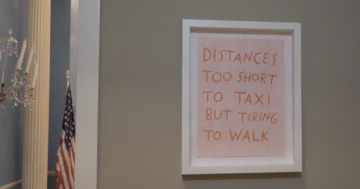
CATALYST Exhibition: Room by Room Walkthroughs

Gracie Mansion Tours
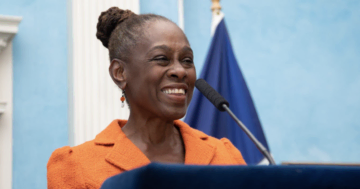
The First Ladies of Gracie Mansion
Email (required) *
Join our Email Community for the Latest News, House Information, Upcoming Events, and More
- collections
Gracie Mansion
Free admission.
About the Museum
No tour of historic New York City residences is complete without a visit to Gracie Mansion. Archibald Gracie built a country home for his family in 1799 with his fortune made in shipping. After passing through several hands, the city purchased the building, which served as the original home of the Museum of the City of New York. Robert Moses convinced Mayor Fiorello LaGuardia to move into the renovated mansion in 1942 and ever since it has served as the official residence of the city's chief executive. Like the real White House, visiting hours are limited and by guided tour only. Unless, of course, you are summoned for an audience with the Mayor.
Anybody who can live here and doesn't has got to be nuts - Ed Koch, Former Mayor of New York City
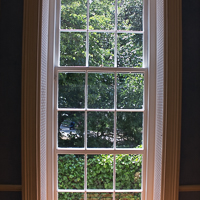
What You Will See
The historic home is active not only as the residence of the Mayor and his family but for official city business and celebrations. Mayor Bloomberg, who is the only mayor not to live in the house, restored the home and turned it into a "People's House"--a museum of New York City history open to the public. Bloomberg's successor, Mayor de Blasio, moved his family into the house and public visiting house were significantly cut. However, the Mayor and his wife helped curate a change of exhibits and visitors can see historic paintings, important documents and the period decor of the home, all during a ticketed (but free) 45-minute guided tour.

Why You Should Go
Gracie Mansion offers a unique opportunity to connect with the municipal leadership of the city. The art, decorations, and artifacts on display were selected by the Mayor and his family to reflect the values and goals of the administration. Many of the works are on loan from major museums around the city, including the Museum of the City of New York, the New-York Historical Society and National Museum of the American Indian. Works highlight the immigrant experience in New York and the resulting ethnic diversity as well as the role of the New York in global commerce and resulting inequality. Additional works connect New York City to the American Revolution and the founding of America. Come to learn more about the city, the country and the current Mayor's vision for the future.
- Follow the Gracie Mansion -
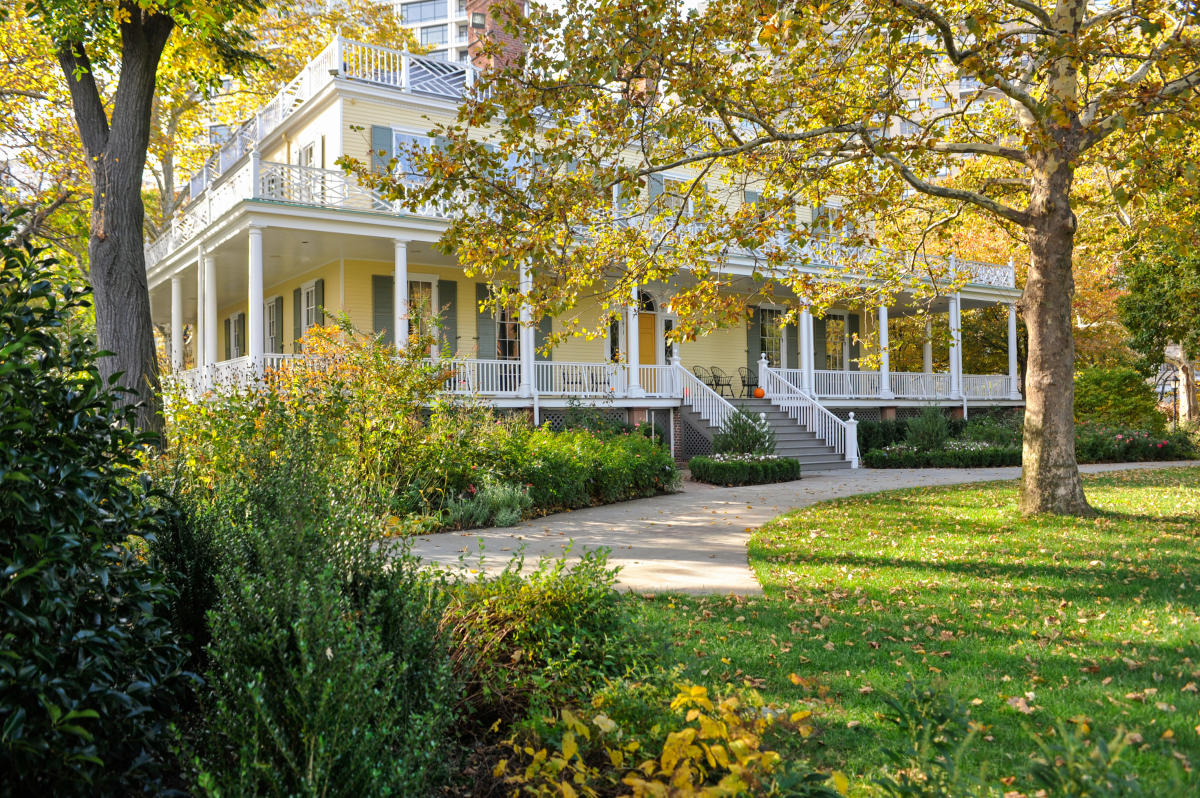
Gracie Mansion
Description
East End Ave Manhattan, NY, 10128
Top Places to Visit in NYC Right Now
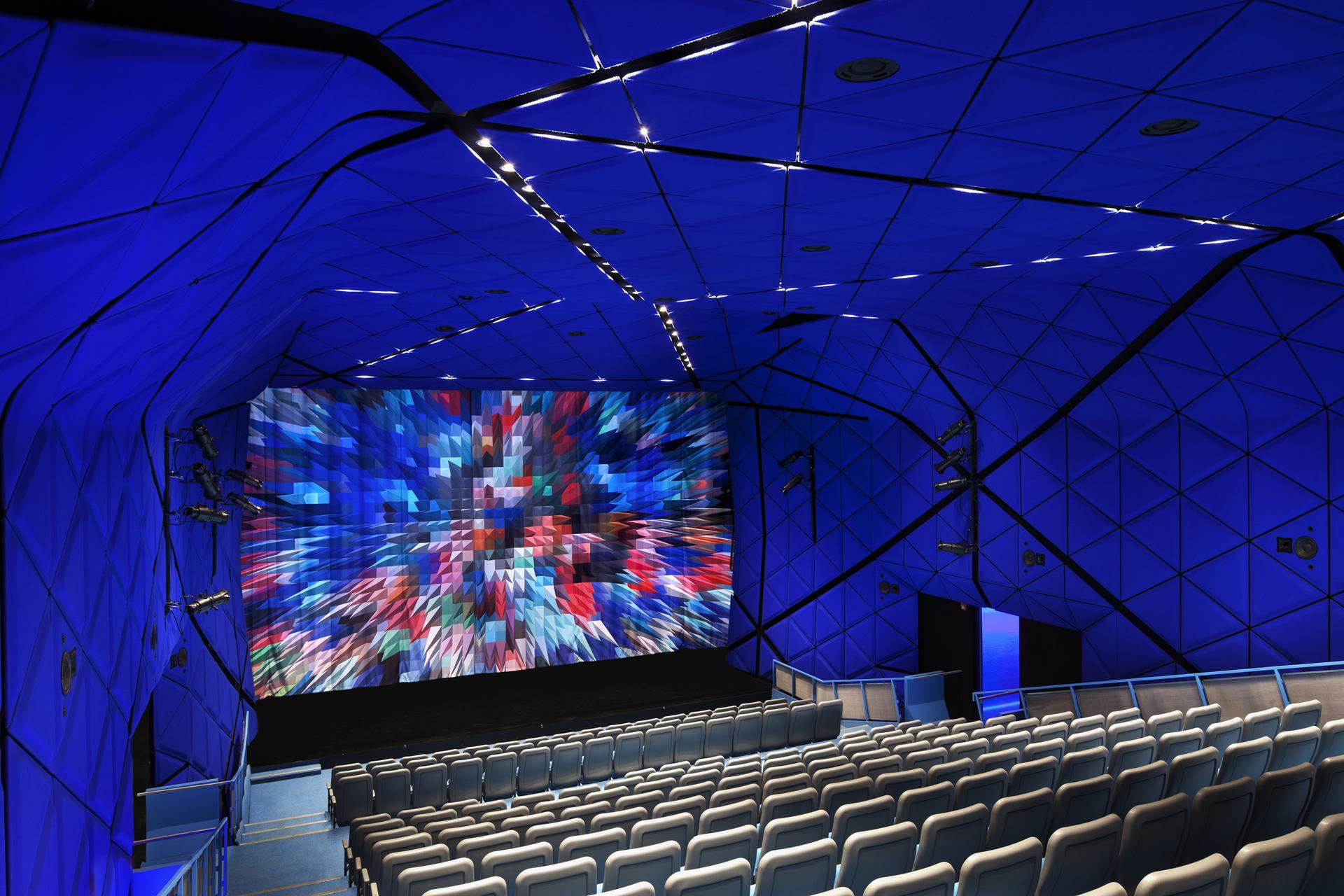
Museum of the Moving Image
Witness the art, technology and social impact of film, television and digital media at this Queens institution.
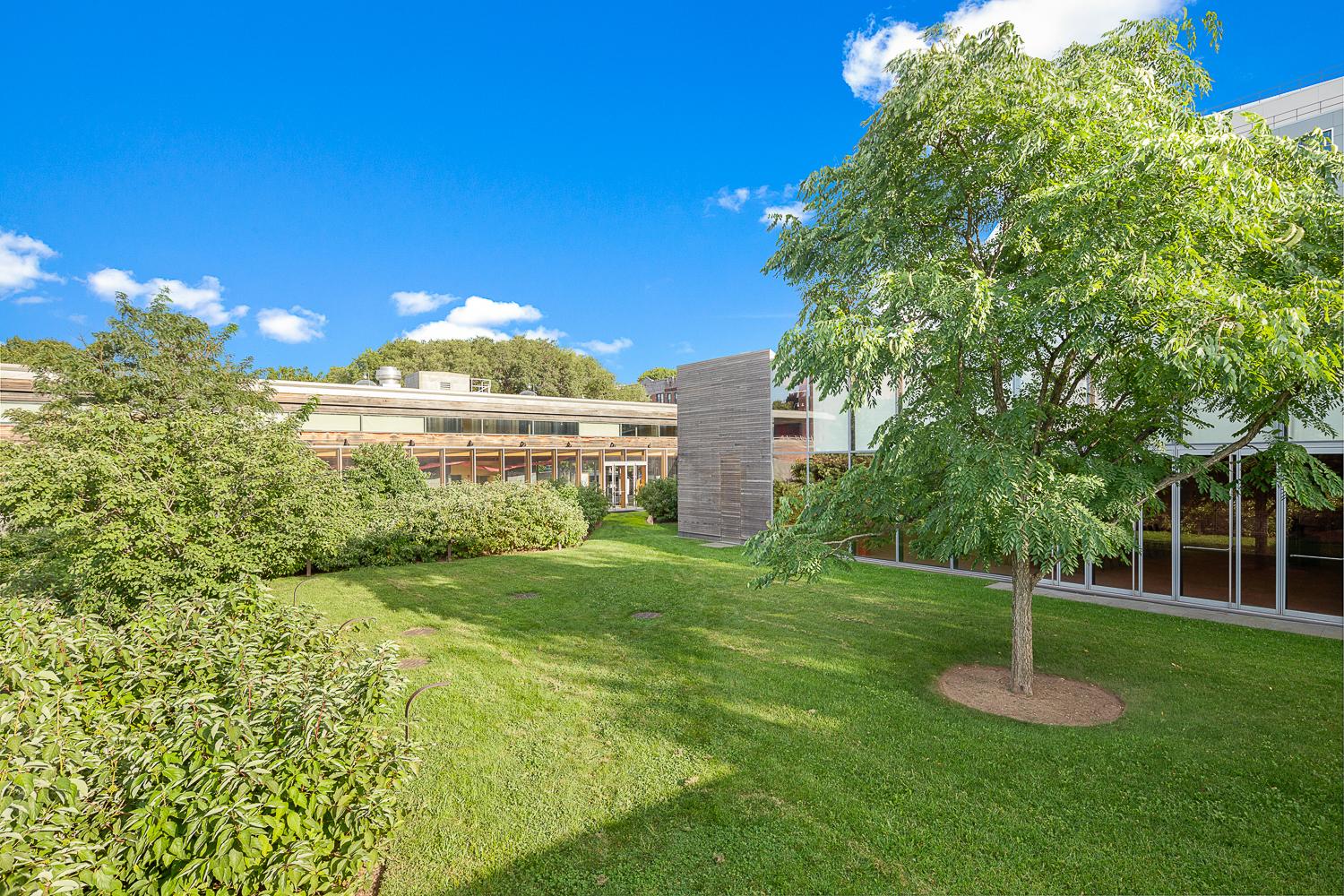
Weeksville Heritage Center
The center preserves the history of the free African American communities of Weeksville, Brooklyn.
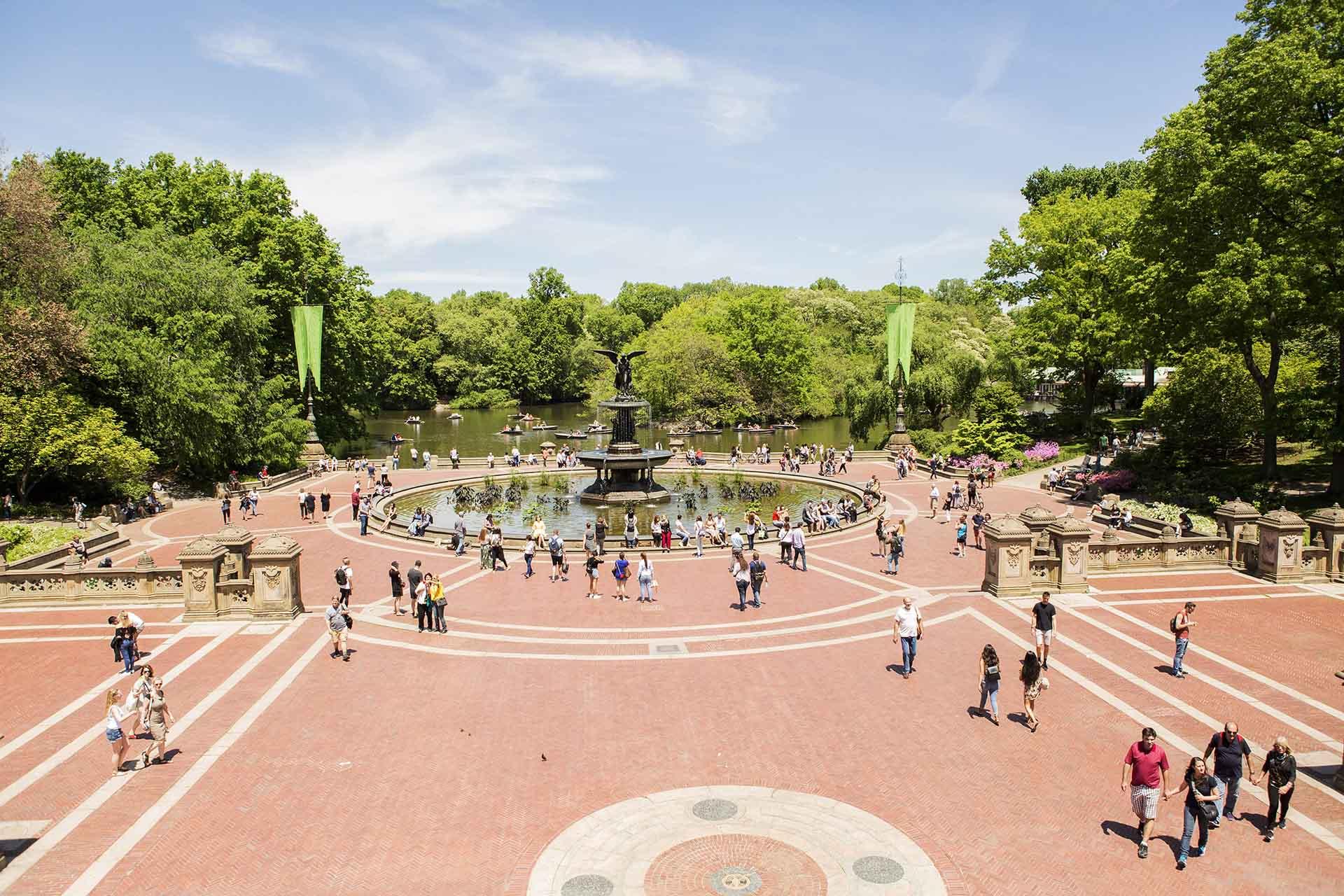
Central Park
An urban oasis in the heart of Manhattan, the 843-acre park encompasses rolling fields, woodlands, trails and waterways, plus a number of family attractions.
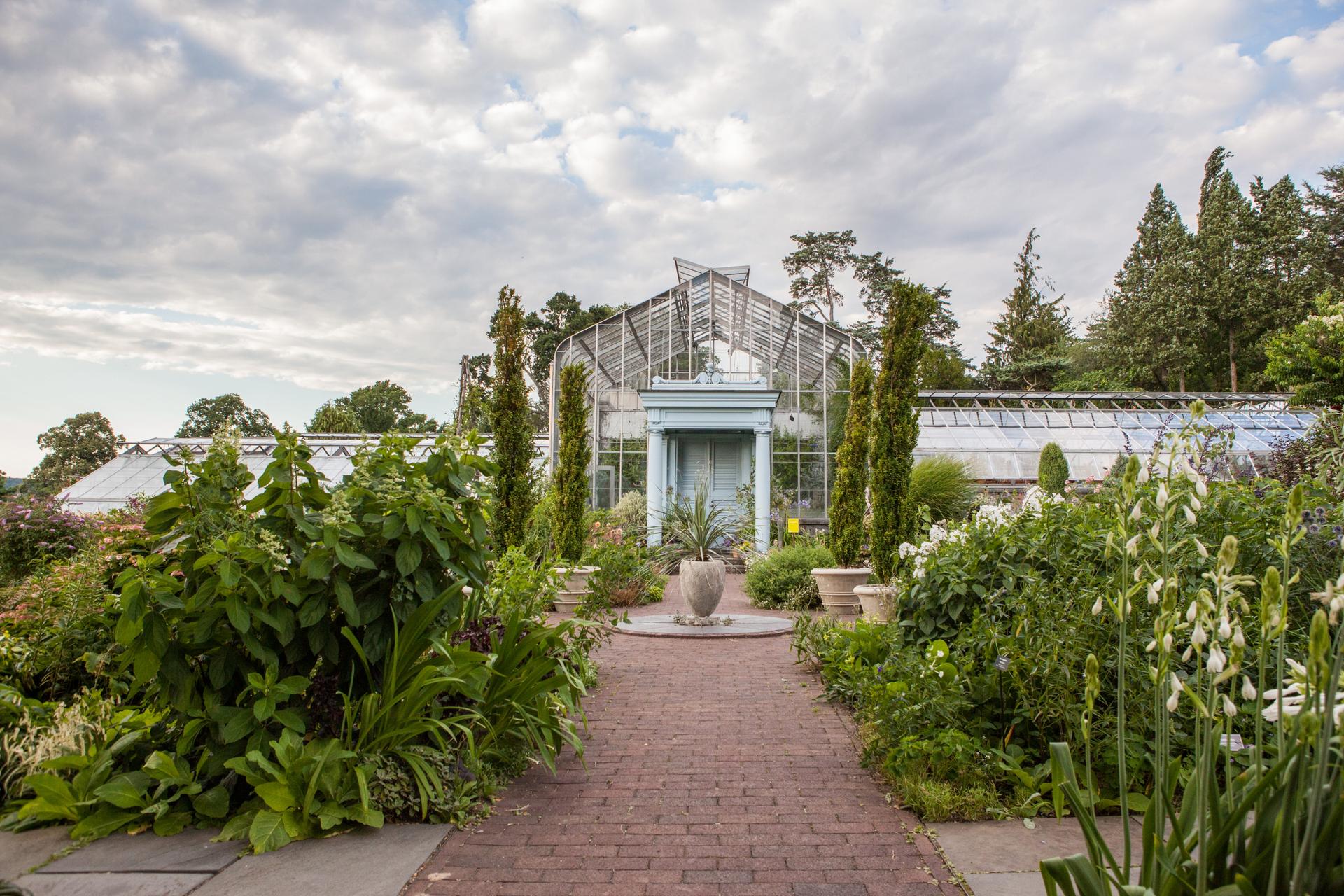
This public garden and cultural center in the Bronx overlooks the Hudson River, with sweeping views west to the New Jersey Palisades.
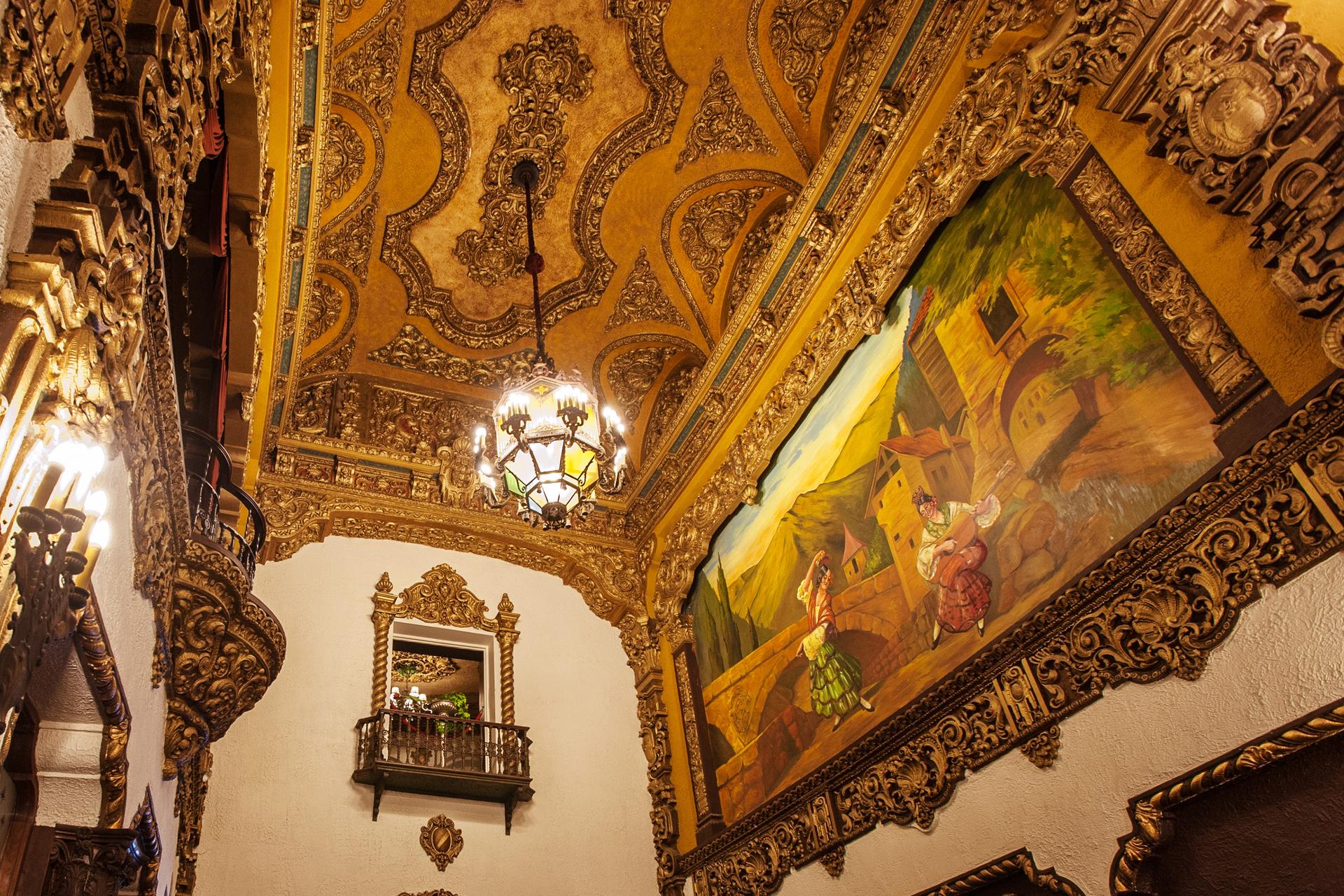
St. George Theatre
This Staten Island theater is one of the borough’s most beloved cultural spots.

Gracie Mansion Tour
Gracie Mansion is the official residence of the Mayor in New York City. Built in 1799, it is located in Carl Shurz Park, at East End Avenue and 88 th Street in the Yorkville section of Manhattan.
You can make a reservation for a tour of Gracie Mansion.
Reserve a time for a tour of Gracie Mansion.
Disclaimer:
The City intends to use the data collected from this survey to generally add and improve City services. Survey participation is voluntary. Participants in this survey will not receive further communication from the City with regards to this survey.
Was this information helpful? Yes No

To change the text size on NYC.gov you can use your web browser's settings. Most browsers include functionality to let you increase or decrease the text on a web page. For example, to increase text size using:
In the menu to the right of the address bar, select and set Zoom level. Menu > Zoom > +
In the View menu, select Zoom. View > Zoom > Zoom In
Internet Explorer
In the View menu, select Text Size. View > Text Size > Largest
In the View menu, select Zoom In. View > Zoom In Macintosh Shortcut: Command+
No Web Browser Endorsement
Common browsers are included in this page; mention of a specific browser does not imply endorsement or recommendation.

Experience Gracie Mansion. Where history meets the future.
Experience public and private tours and special events.

PRESS AND HONORS

Public Tours
Mondays 10:30am, 12pm and 1:30pm contingent on availability.
Tour reservation is $10 per attendee
Tours are for ages 10+ (due to the educational curriculum and safety requirements).
Mondays at 10:30 am, 12:00 pm, and 1:30pm
Please be aware of your registration date
ID is required for entry

Group Tours
Request a private tour of Gracie Mansion by selecting a date & submitting a request.
Only Wednesdays at 10:30am and 12pm contingent on availability
$10 per person and a minimum of 15 people
Tours are for ages 10+ (due to the educational curriculum and safety requirements).

Request a tea tour at Gracie Mansion by selecting a date & submitting a request.
$95 per person and a minimum of 10 people per group (limit 50)
Select Mondays from 1 to 3 PM or Wednesdays from 12 to 2 PM
A Gracie Mansion docent will lead you through the public rooms of the Mansion
Tours are for ages 10+ (due to the educational curriculum and safety requirements).
Registration for a private tour is handled solely by the group's leader/coordinator
Special Tours
Special Tour Dates Now Available:
September 16th: 10:30am, 12pm and 1:30pm
September 23rd: 10:30am, 12pm and 1:30pm
September 30th: 10:30am, 12pm and 1:30pm
School Tours
Request a school tour at Gracie Mansion by selecting a date & submitting a request.
School Tours are held on Wednesday at 10:30AM and 12:00PM
To reserve a date, submit the booking form and check your email for a confirmation
For more help kindly email [email protected]

GET ON THE GMC VIP EXPERIENCE LIST!
Submit the form below and get the latest updates on our latest experiences including special cocktail events, artist exhibitions, gala benefits, special tours and more!
Let’s Get Together
Thanks for submitting!
GRACIE MANSION CONSERVANCY 181 East End Avenue, New York, NY 10128 (212) 570-4751 | [email protected]

( nyc.gov;Jim.henderson/Wikimedia Commons )
Inside Gracie Mansion as NYC Mayor Eric Adams Is Indicted and Feds Search Official Residence
New York City Mayor Eric Adams was indicted on Wednesday in federal court in Manhattan on multiple criminal charges, with feds swarming his official residence, Gracie Mansion.
According to the 57-page indictment that was unsealed on Thursday morning, Adams has been indicted on five federal charges related to bribery, wire fraud, and soliciting campaign contributions from foreign nationals.
The historic federal indictment alleges that Adams took $10 million in illegal donations, along with free luxury travel and ritzy perks, according to the New York Post.
Adams is the first sitting New York mayor to be indicted while in office.
In a taped video message provided on Wednesday to CBS News New York , Adams said, “My fellow New Yorkers, it is now my belief that the federal government intends to charge me with crimes. If so, these charges will be entirely false, based on lies, but they would not be surprising. I always knew that if I stood my ground for all of you, that I would be a target, and a target I became for months, leaks and rumors have been aimed at me in an attempt to undermine my credibility and paint me as guilty.”
On Thursday morning, the FBI searched Adams’ Gracie Mansion residence.
While what they find remains unknown, many might be wondering what the mayor’s historic residence is like—here’s a brief tour and history.
Mayor Eric Adams and Gracie Mansion
The grand, yellow Gracie Mansion is located on the corner of East 88th Street and East End Avenue. It was built in 1799.
Gracie Mansion has been the official residence of New York City mayors since 1942. Since then, every mayor except for Michael Bloomberg has lived there at some point during their term.
After he won the 2021 New York City mayoral election, Adams reportedly moved into Gracie Mansion.
But there’s been some controversy over whether he actually lives there.
In 2021, Adams implied that he might divide his time between his Brooklyn home and Gracie Mansion. He also said that he would bring just a mattress to Gracie Mansion without even redecorating the space.
Yet Adams also once told CBS New York that the best thing about living in the mansion is the water, and that he enjoys sitting on the wraparound porch that was restored in 1983 and having a cigar and a glass of cognac there.
Gracie Mansion is located in Carl Schurz Park above Hell Gate, a stretch of water where the Harlem River, East River, and Long Island Sound meet.

(Jim.henderson/Wikimedia Commons)
Gracie Mansion is also a wedding venue
Adams has hosted at least three weddings in Gracie Mansion, including the civil ceremony of influencer Danielle Zaslavsky and Aloni Matzon .

(Instagram/dzaslavsky)
@dzaslavsky married my best friend today #married #graciemansion ♬ champagne poetry – ✿
Is Gracie Mansion haunted?
Adams also told CBS News New York that he thinks Gracie Mansion is haunted.
A woman named Elizabeth Gracie-Walcott died from apoplexy in the mansion in 1819. She was the daughter-in-law of the mansion’s architect, and some people believe she now haunts the home.
“There’s a ghost that runs around here,” Adams told CBS News New York . “You hear squeaks, you’ll hear doors closed, you’ll hear different sounds inside the building.
“I think a building with this much history, I believe there’s an energy that you feel in here,” Adams continued.
Take a look at a few of the rooms in the famous mansion below.
The main foyer
The main foyer has a faux-marble floor painted in the trompe-l’oeil style.

(NYTStyle/Instagram)
The yellow parlor
The yellow parlor on the ground floor sits to the right of the main foyer.

(YouTube/CBSNewYork)
The Susan E. Wagner Wing
The blue foyer in the Susan E. Wagner Wing.

(Instagram/JulieGilhart)
Julie Taylor is a writer, producer, and editor. Her work has appeared in Cosmopolitan, Redbook, and other publications.
- Related Articles
Share this Article
Connect with an agent, a realtor.com coordinator will connect you with a local agent in minutes.
A local real estate agent can answer questions, give guidance, and schedule home tours.
By proceeding, you consent to receive calls and texts at the number you provided, including marketing by autodialer and prerecorded and artificial voice, and email, from Realtor.com and others Persons who may contact you include real estate professionals such as agents and brokers, mortgage professionals such as lenders and mortgage brokers, realtor.com and its affiliates, insurers or their agents, and those who may be assisting any of the foregoing. about your inquiry and other home-related matters, but not as a condition of any purchase. More You also agree to our Terms of Use, and to our Privacy Policy regarding the information relating to you. Msg/data rates may apply. This consent applies even if you are on a corporate, state or national Do Not Call list.

A Realtor.com coordinator will call you shortly
What’s next.
- A coordinator will ask a few questions about your home buying or selling needs.
- You’ll be introduced to an agent from our real estate professional network.
To connect right away, call (855) 650-5492
FBI seizes Eric Adams' phone in Gracie Mansion search, lawyer says, as mayor charged
Adams, a former police captain and brooklyn borough president who was elected mayor in 2021, could face federal charges as soon as thursday, sources told nbc news, by jonathan dienst , tom winter , melissa russo and courtney copenhagen • published september 26, 2024 • updated on september 26, 2024 at 3:02 pm.
The FBI appeared to conduct a search of Gracie Mansion, the official home of New York City Mayor Eric Adams, on Thursday, according to video from WNBC, NBC News and multiple people familiar with the matter.
The FBI New York declined to comment. Sources said agents had a search warrant and duffel bags. The warrant, they said, only pertained to Turkey and covered cell phones and tablets.
Alex Spiro, an attorney for Adams, confirmed federal agents appeared and called it a "spectacle."
24/7 New York news stream: Watch NBC 4 free wherever you are
"Federal agents appeared this morning at Gracie Mansion in an effort to create a spectacle (again) and take Mayor Adams phone (again). He has not been arrested and looks forward to his day in court," Spiro said. "They send a dozen agents to pick up a phone when we would have happily turned it in."
Multiple vehicles were later seen leaving the premises.
Thursday's search comes after two sources familiar with the matter said federal charges against Adams are expected to be filed by prosecutors out of the Southern District of New York as early as Thursday. That would make the Democrat the city's first sitting mayor to face criminal prosecution.
Get Tri-state area news delivered to your inbox. Sign up for NBC New York's News Headlines newsletter.
It was not immediately clear what charges Adams would face nor to which investigation they may be tied.
Adams has denied any wrongdoing on his part and any knowledge of wrongdoing regarding a series of probes surrounding his administration. People in black suits were seen going into Gracie Mansion early Thursday.
In a statement Wednesday night , Adams was defiant, saying the charges were based on lies. He once again maintained he has done nothing wrong and was adamant he would fight the charges — and he would not resign.
"It is now my belief that the federal government intends to charge me with crimes. If so, these charges would be entirely false, based on lies. But they would not be surprising. I always knew that If I stood my ground for all of you that I would be a target—and a target I became," Adams said in the video statement from Gracie Mansion. "For months, leaks and rumors have been aimed at me in an attempt to undermine my credibility and paint me as guilty."
Adams went on to reference an FBI search at the home of interim NYPD Commissioner Tom Donlon on Sept. 20, just days after he was named the city's top cop.
"Enough. I will fight these injustices with every ounce of my strength, and my spirit," the mayor said. "If I am charged, I know I am innocent."
Adams noted that he would request an immediate trial "so that New Yorkers can hear the truth." He also addressed those who would call on him to resign, saying he would continue to lead the city.
"Many may say I should resign because I cannot manage the city while fighting the case. I can also understand how everyday New Yorkers would be concerned that I cannot do my job while I face accusations," Adams said. "But I have been facing these lies for months, since I began to speak out for all of you and their investigation started—yet the city has continued to improve."
Spokespeople for the FBI and U.S. Attorney’s Office declined to comment when asked Wednesday evening.
If Adams were to resign at any point , he would be replaced by the city’s public advocate, Jumaane Williams, who would then schedule a special election. Gov. Kathy Hochul has the power to remove Adams from office. Hochul’s office did not immediately return a request for comment Wednesday night.
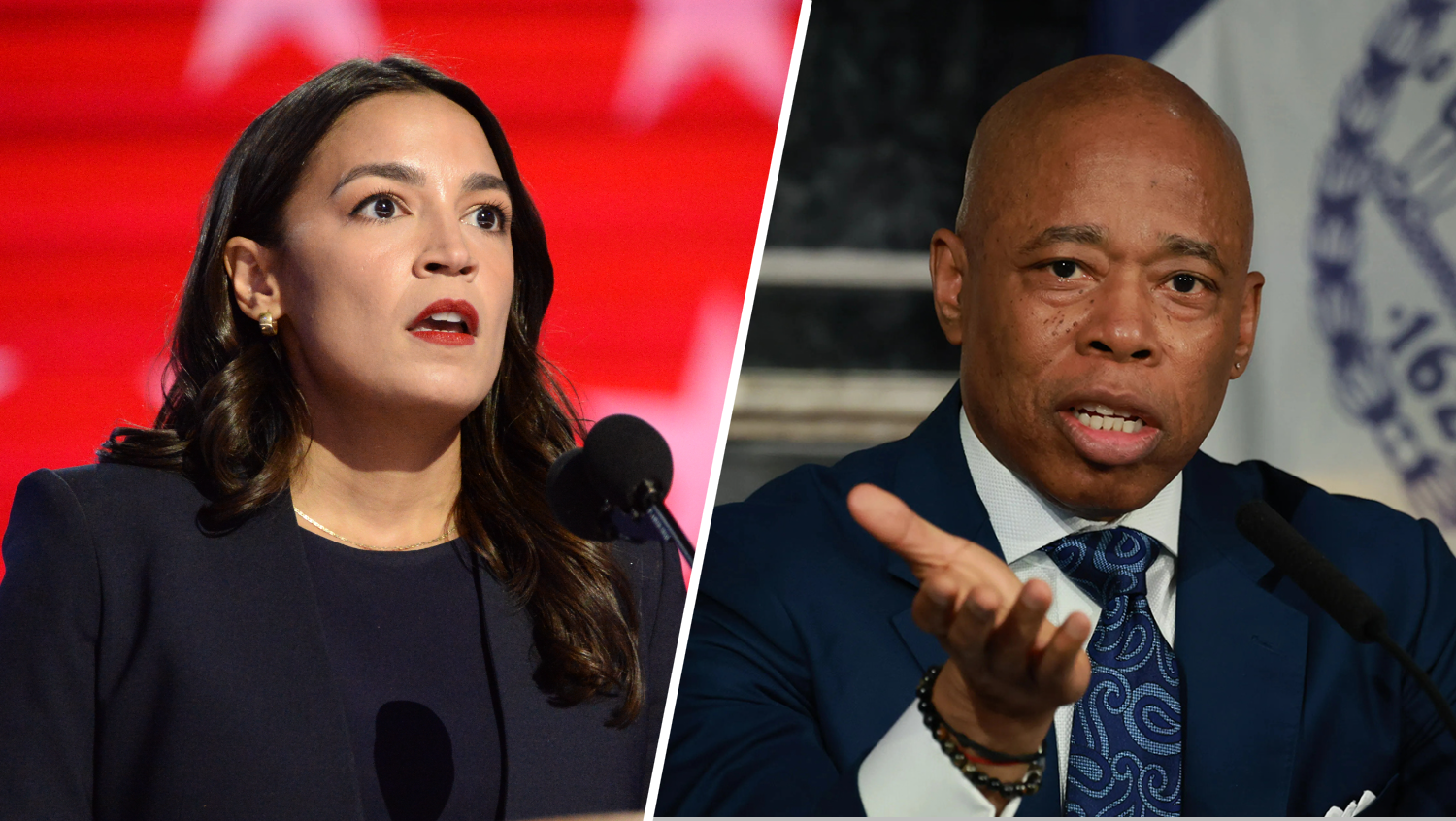
AOC calls on Eric Adams to resign, NYC mayor claps back
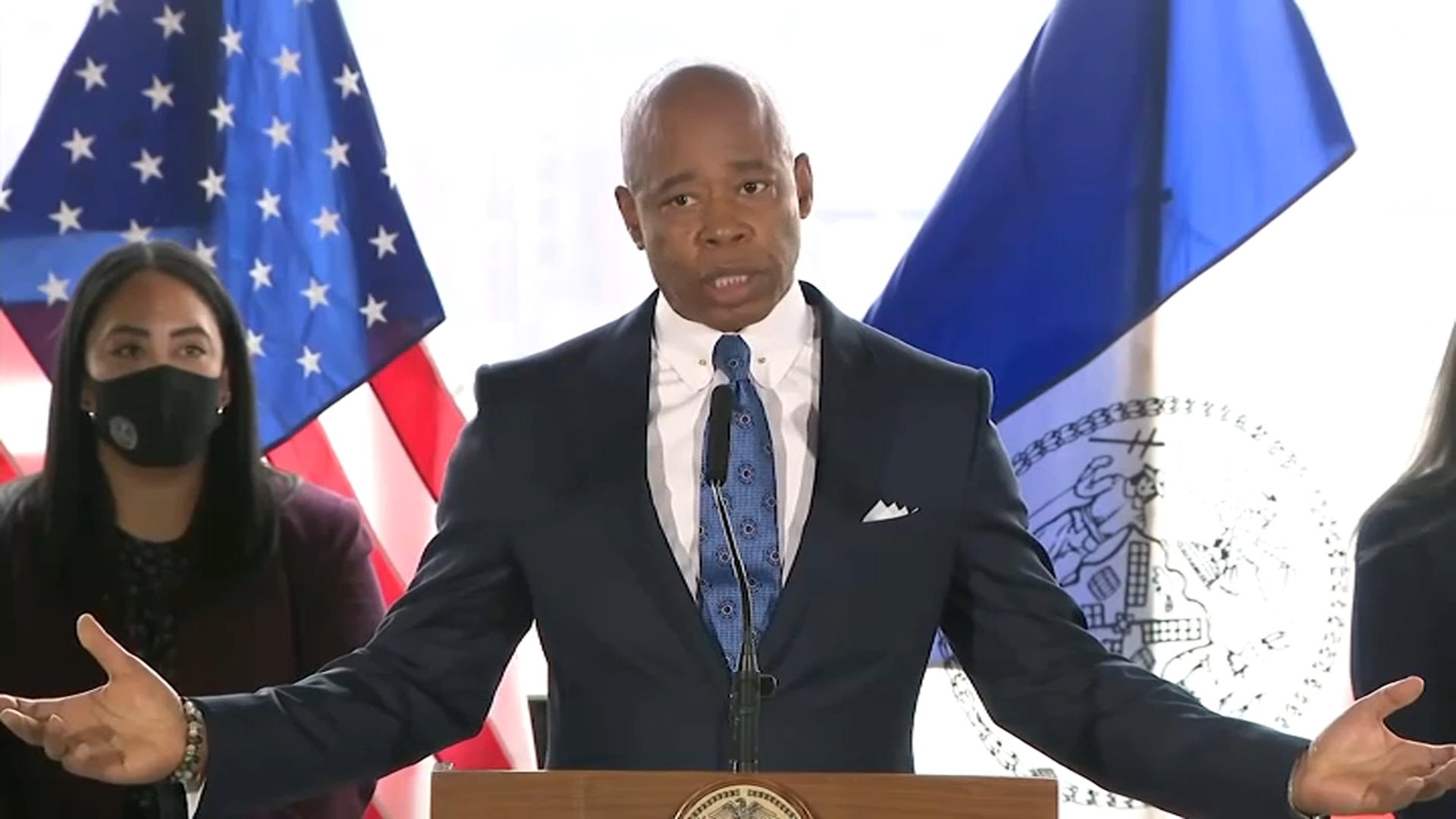
What we know about the investigations surrounding NYC Mayor Eric Adams
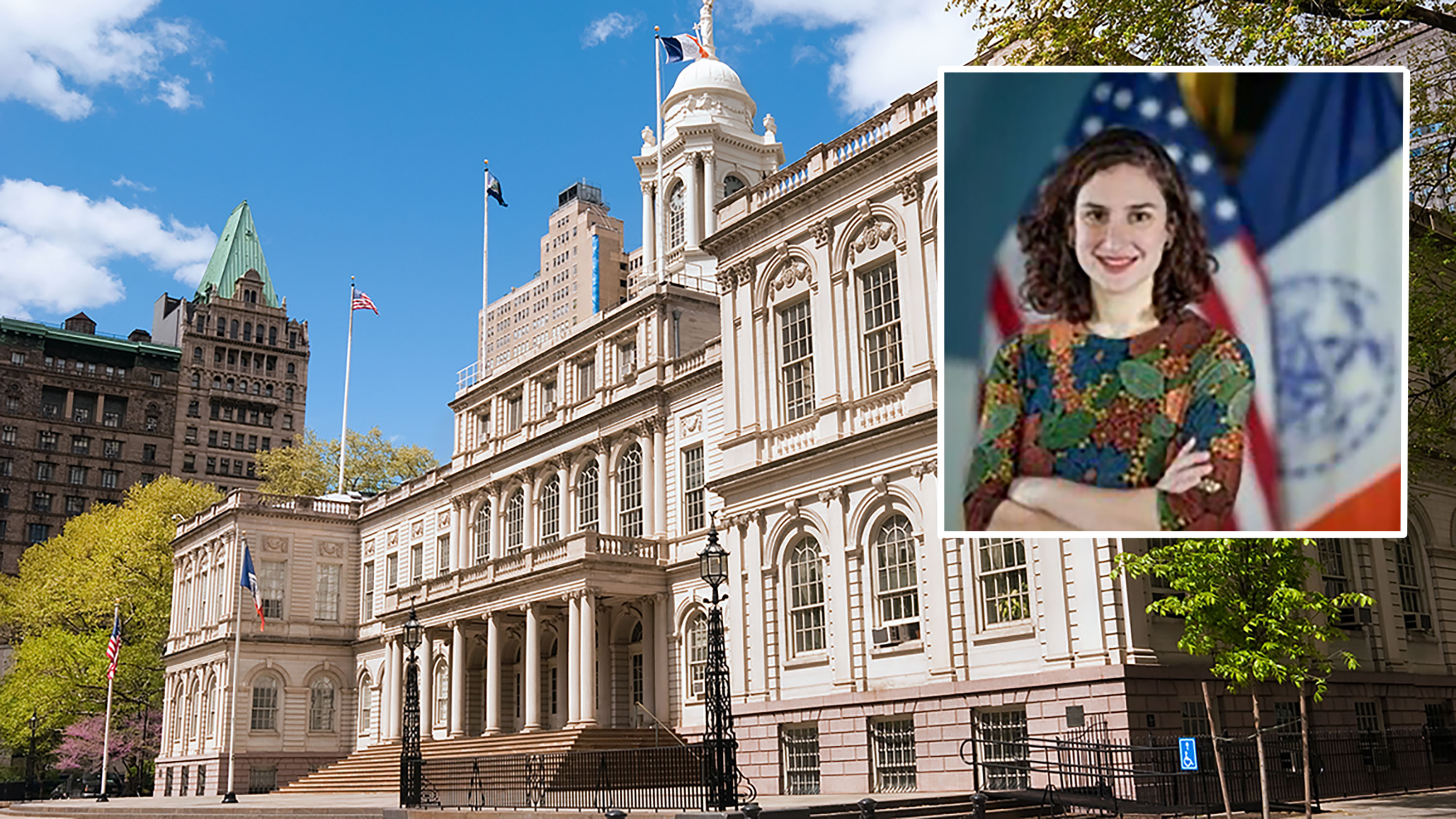
NYC director of asylum operations is latest Adams official to receive federal subpoena: Source
What we know about the investigations.
The charges are set to come nearly a year after the first sign of federal authorities looking into Adams and those around him. On Nov. 2, 2023, FBI agents searched the Brooklyn home of one of his top fundraisers , Brianna Suggs.
At the time, a spokesperson for the FBI confirmed agents had engaged in law enforcement activity at the brownstone , but did not share further details on the matter. Agents — some dressed in suits, others in tactical gear — lugged boxes of evidence from the home to a minivan outside.
The New York Times reported a short time later that the warrant sought records related to contributions, travel to Turkey by people linked to the campaign, and documents of interactions between the campaign and Turkey's government, or people acting at its behest.
It was not clear at the time whether Suggs, 25, was the target of an investigation, though sources familiar with the matter told NBC New York that the search was related in part to questions about campaign fundraising. At that time, Adams said he had not been contacted by any investigators regarding a potential case.
Suggs, who worked closely with Adams since 2017, had been a campaign consultant to Adams who raised money for his election effort and also lobbied his administration on behalf of corporate clients.
Just four days later, on Nov. 6, FBI agents stopped Adams himself as he left an event in Manhattan and seized his cellphones and iPad.
Later that same week, Adams said he had no personal knowledge of any improper fundraising, and didn't believe he had anything to personally fear from the investigation. Neither he nor Suggs had been accused of any wrongdoing at that time.
Agents also searched the home of Adams' liaison to the Turkish community in New York and a former Turkish airline executive. As part of that inquiry, federal prosecutors sought information about a time period when Adams was still Brooklyn borough president, but had won the Democratic primary and was widely expected to be elected mayor in the fall.
During that period, Turkish officials were trying to get the city to expedite FDNY approval of a new diplomatic building that was being held up because of safety concerns.
Federal prosecutors started looking into whether Mayor Adams ' previous contact with the FDNY crossed any lines when he inquired about those fire safety and occupancy permit issues revolving around the new high-rise building — which was set to house the new Turkish consulate, multiple sources with the matter told NBC New York in Nov. 2023.
Sources familiar with the matter said the mayor texted with then-FDNY Commissioner Daniel Nigro about when occupancy for the 35-story building could take place, to which Nigro responded saying that it would be handled the following Monday. Adams said his text to the fire commissioner was a routine request.
A source familiar with the matter said former FDNY Commissioner Nigro was questioned as a witness by the FBI at least twice, including on Nov. 3.
Two sources familiar with the investigation said that safety officials at the FDNY signed off on a letter of occupancy with no objection, meaning the FDNY had reached an agreement with the building for added safety measures that would allow for access to the building. Fire chiefs told FBI investigators in April 2023 that they faced a pressure campaign to rubber stamp the new Turkish consulate building despite existing safety concerns, according to an attorney representing one of the chiefs.
Those questions came as the FBI was already investigating whether Turkish individuals improperly donated, or were involved in the improper bundling of contributions, to the Adams' 2021 mayoral campaign.
Still, then-Chief Counsel Lisa Zornberg (who has since resigned from that position) said there was no information to suggest Adams was a target of the criminal investigation or accused of any wrongdoing, noting that "there has been no indication that I’ve seen that the mayor is a target."
In August, federal prosecutors subpoenaed Adams , his campaign arm and City Hall, requesting information about the mayor’s schedule, his overseas travel and potential connections to the Turkish government.
Private attorneys for the mayor said they had turned over “extensive evidence undermining the reported theories of federal prosecution as to the mayor.”
Jake Offenhartz of The Associated Press contributed to this report.
This article tagged under:
FBI search home of NYC Mayor Eric Adams amid investigation
Adams, a former police captain and brooklyn borough president who was elected mayor in 2021, could face federal charges as soon as thursday, sources told nbc news, by jonathan dienst , tom winter , melissa russo and courtney copenhagen • published september 26, 2024 • updated on september 26, 2024 at 2:47 pm.
The FBI appears to be conducting a search of Gracie Mansion, the official home of New York City Mayor Eric Adams, on Thursday, according to video from WNBC, NBC News and multiple people familiar with the matter.
The FBI New York declined to comment. Sources said agents had a search warrant and duffel bags. The warrant, they said, only pertained to Turkey and covered cell phones and tablets.
Alex Spiro, an attorney for Adams, confirmed federal agents appeared and called it a "spectacle."
"Federal agents appeared this morning at Gracie Mansion in an effort to create a spectacle (again) and take Mayor Adams phone (again). He has not been arrested and looks forward to his day in court," Spiro said. "They send a dozen agents to pick up a phone when we would have happily turned it in."
Multiple vehicles were later seen leaving the premises.
Thursday's search comes after two sources familiar with the matter said federal charges against Adams are expected to be filed by prosecutors out of the Southern District of New York as early as Thursday. That would make the Democrat the city's first sitting mayor to face criminal prosecution.
It was not immediately clear what charges Adams would face nor to which investigation they may be tied.
Adams has denied any wrongdoing on his part and any knowledge of wrongdoing regarding a series of probes surrounding his administration. People in black suits were seen going into Gracie Mansion early Thursday.
In a statement Wednesday night , Adams was defiant, saying the charges were based on lies. He once again maintained he has done nothing wrong and was adamant he would fight the charges — and he would not resign.
"It is now my belief that the federal government intends to charge me with crimes. If so, these charges would be entirely false, based on lies. But they would not be surprising. I always knew that If I stood my ground for all of you that I would be a target—and a target I became," Adams said in the video statement from Gracie Mansion. "For months, leaks and rumors have been aimed at me in an attempt to undermine my credibility and paint me as guilty."
Adams went on to reference an FBI search at the home of interim NYPD Commissioner Tom Donlon on Sept. 20, just days after he was named the city's top cop.
"Enough. I will fight these injustices with every ounce of my strength, and my spirit," the mayor said. "If I am charged, I know I am innocent."
Adams noted that he would request an immediate trial "so that New Yorkers can hear the truth." He also addressed those who would call on him to resign, saying he would continue to lead the city.
"Many may say I should resign because I cannot manage the city while fighting the case. I can also understand how everyday New Yorkers would be concerned that I cannot do my job while I face accusations," Adams said. "But I have been facing these lies for months, since I began to speak out for all of you and their investigation started—yet the city has continued to improve."
Spokespeople for the FBI and U.S. Attorney’s Office declined to comment when asked Wednesday evening.
If Adams were to resign at any point , he would be replaced by the city’s public advocate, Jumaane Williams, who would then schedule a special election. Gov. Kathy Hochul has the power to remove Adams from office. Hochul’s office did not immediately return a request for comment Wednesday night.
What we know about the investigations
The charges are set to come nearly a year after the first sign of federal authorities looking into Adams and those around him. On Nov. 2, 2023, FBI agents searched the Brooklyn home of one of his top fundraisers , Brianna Suggs.
At the time, a spokesperson for the FBI confirmed agents had engaged in law enforcement activity at the brownstone , but did not share further details on the matter. Agents — some dressed in suits, others in tactical gear — lugged boxes of evidence from the home to a minivan outside.
The New York Times reported a short time later that the warrant sought records related to contributions, travel to Turkey by people linked to the campaign, and documents of interactions between the campaign and Turkey's government, or people acting at its behest.
It was not clear at the time whether Suggs, 25, was the target of an investigation, though sources familiar with the matter told NBC New York that the search was related in part to questions about campaign fundraising. At that time, Adams said he had not been contacted by any investigators regarding a potential case.
Suggs, who worked closely with Adams since 2017, had been a campaign consultant to Adams who raised money for his election effort and also lobbied his administration on behalf of corporate clients.
Just four days later, on Nov. 6, FBI agents stopped Adams himself as he left an event in Manhattan and seized his cellphones and iPad.
Later that same week, Adams said he had no personal knowledge of any improper fundraising, and didn't believe he had anything to personally fear from the investigation. Neither he nor Suggs had been accused of any wrongdoing at that time.
Agents also searched the home of Adams' liaison to the Turkish community in New York and a former Turkish airline executive. As part of that inquiry, federal prosecutors sought information about a time period when Adams was still Brooklyn borough president, but had won the Democratic primary and was widely expected to be elected mayor in the fall.
During that period, Turkish officials were trying to get the city to expedite FDNY approval of a new diplomatic building that was being held up because of safety concerns.
Federal prosecutors started looking into whether Mayor Adams ' previous contact with the FDNY crossed any lines when he inquired about those fire safety and occupancy permit issues revolving around the new high-rise building — which was set to house the new Turkish consulate, multiple sources with the matter told NBC New York in Nov. 2023.
Sources familiar with the matter said the mayor texted with then-FDNY Commissioner Daniel Nigro about when occupancy for the 35-story building could take place, to which Nigro responded saying that it would be handled the following Monday. Adams said his text to the fire commissioner was a routine request.
A source familiar with the matter said former FDNY Commissioner Nigro was questioned as a witness by the FBI at least twice, including on Nov. 3.
Two sources familiar with the investigation said that safety officials at the FDNY signed off on a letter of occupancy with no objection, meaning the FDNY had reached an agreement with the building for added safety measures that would allow for access to the building. Fire chiefs told FBI investigators in April 2023 that they faced a pressure campaign to rubber stamp the new Turkish consulate building despite existing safety concerns, according to an attorney representing one of the chiefs.
Those questions came as the FBI was already investigating whether Turkish individuals improperly donated, or were involved in the improper bundling of contributions, to the Adams' 2021 mayoral campaign.
Still, then-Chief Counsel Lisa Zornberg (who has since resigned from that position) said there was no information to suggest Adams was a target of the criminal investigation or accused of any wrongdoing, noting that "there has been no indication that I’ve seen that the mayor is a target."
In August, federal prosecutors subpoenaed Adams , his campaign arm and City Hall, requesting information about the mayor’s schedule, his overseas travel and potential connections to the Turkish government.
Private attorneys for the mayor said they had turned over “extensive evidence undermining the reported theories of federal prosecution as to the mayor.”
Jake Offenhartz of The Associated Press contributed to this report.
This article tagged under:
Advertisement
Supported by
Humble Roots Helped Make Him Mayor. A Love of Luxury May Bring Him Down.
Mayor Eric Adams was elected partly on the strength of his origin story, a narrative that shrouded questions of his character, judgment and associates.
- Share full article

By Nicholas Fandos Eliza Shapiro and Emma G. Fitzsimmons
In December 2021, just weeks after he was elected as the second Black mayor in New York City’s history, Eric Adams took a surprise trip to Ghana.
He called it a “spiritual journey,” and the weeklong tour built on a story that had resonated deeply with voters. Mr. Adams visited slave trade sites and meditated on the remarkable arc that allowed a man whose ancestors left in shackles to return as the next leader of America’s largest city.
But federal prosecutors asserted this week that the trip was also at the center of a far more troubling story: a long-running bribery scheme in which Turkey plied Mr. Adams with more than $100,000 in luxury travel perks and illegal campaign contributions in exchange for political favors.

Here Are the Charges Eric Adams Faces, Annotated
The Times annotated the indictment.
His spokesman insisted at the time that Mr. Adams had paid for the sojourn to Ghana. But prosecutors charged in their indictment that Turkish Airlines had secretly given Mr. Adams and his partner free business-class upgrades worth $12,000 — right after he agreed to lean on the Fire Department to prematurely approve safety permits for Turkey’s new consulate.
The five criminal counts in the indictment have made Mr. Adams, a Democrat, the first New York City mayor to face federal criminal charges. On Friday, he pleaded not guilty to all of them in Federal District Court in Manhattan.
But the 57-page indictment — stuffed with the mayor’s private text messages, images of sumptuous suites at the St. Regis Istanbul and details of sham fund-raisers — has forced to the fore painful questions that promise to recast the narrative of his mayoralty, if not end it altogether.
The outlines of that ascent are well known. The dyslexic child of a single mother in New York City, Mr. Adams was beaten by the police before signing up for the force. He did not look or sound like mayoral candidates before him, but voters flocked to him.
He won a crowded primary in 2021, in a city laid low by a once-in-a-century pandemic, not so much by selling policy prescriptions but rather an image of New York City embodied by himself. He was a former police captain who simultaneously projected the swagger of wealth and power and the striving of millions of Black and working-class New Yorkers.
So bright was Mr. Adams’s megawatt charisma, though, that it overshadowed years of unsettling questions about his judgment, his tight circle of friends and allies with checkered legal histories and ethical issues, where he traveled and even where precisely he lived.
Rather than speak out, some of his oldest peers from Brooklyn and beyond concede they simply kept their distance.
“There was the hope and expectation that his unique journey would also animate his service,” said Patrick Gaspard, an adviser to Democratic mayors and presidents who began his career as an aide to the city’s first Black mayor, David N. Dinkins.
He continued: “It appears that journey, that story, has been betrayed, either because of personal hubris, or reliance on others who lacked competence.”
As he digs in for a fight, Mr. Adams, 64, is again wrapping himself in his origins. On Thursday, just as the charges against him were being unsealed, he held a rally outside Gracie Mansion with Black clergy and civic leaders, some of whom helped lay the groundwork for his career.
“This case isn’t even a real case,” the mayor’s lawyer Alex Spiro said on Friday. “This is the airline upgrade corruption case.”
But even some of those close to the mayor fear that the damage might already be done, and not only to Mr. Adams. They also worry that a rare window of opportunity for Black leadership and the city itself opened by his election may also slam shut. One senior administration official, who asked not to be named, characterized the last few days as a collective traumatic event.
Charles B. Rangel, the former congressman and dean of Black New York City politics for half a century, concurred, describing the episode as “painful.”
“I’m a New Yorker, and the mayor’s been indicted,” he said. “Goddamn.”
‘The Hope Was So Great’
By the time Mr. Adams set his sights on City Hall, he had honed a pitch that would gradually lift him to the top of a field of a dozen Democratic candidates, some of whom he had successfully cast as elites.
“I didn’t go to Harvard and Yale — I went to CUNY and jail,” he told a group of union members in the spring of 2021, as he was closing in on the nomination, referring to the city’s public university. “But I worked my way through. I am you.”
The verse was a quintessentially Eric Adams way of cementing the message that had made him stand out.
The city, he told voters, should be led by one of its own.
He grew up poor, the son of a house cleaner who moved the family from an increasingly dangerous part of Brooklyn to Southeast Queens, a neighborhood of Black homeowners and civil servants where the mayor’s biography has held particular resonance.
“If you look back at all the mayors we’ve had recently, even Dinkins, they did not have these roots so deeply embedded among working people in the Black community,” said David R. Jones, a longtime Democratic political adviser and the president of the Community Service Society, an anti-poverty group.
“And that’s why the potential was so great, and the hope was so great.”
But Mr. Adams’s climb out of poverty and into the heights of city government has been pockmarked by half-truths and flat-out falsehoods, as well as a steady stream of questions about his ethics and conduct that eventually caught the attention of the U.S. attorney for the Southern District of New York.
The experience at the center of Mr. Adams’s career traces back to his teenage years, when he said he was arrested on a trespassing charge and later beaten by the police. That anecdote has become his life’s foundational trauma — and the fuel that propelled his mission to reform the Police Department from the inside.
Mr. Adams became a transit officer, making a name for himself by creating 100 Blacks in Law Enforcement Who Care, a group of officers dedicated to curbing police abuses and forging better ties with communities. But he also came to be known for controversy, and was the subject of four separate internal investigations in the department.
In the 1990s, Mr. Adams appeared with Louis Farrakhan, the Nation of Islam leader known for antisemitic remarks, and he traveled with a group of officers to Indiana to escort the boxer Mike Tyson, who had been convicted of rape, from prison.
Within the Police Department, Mr. Adams found not only a place to seed his political ambitions but also a tight circle of allies who have advised him for decades. Some of those people were appointed to the mayor’s cabinet, and face their own legal peril .

Tracking Charges and Investigations in Eric Adams’s Orbit
Four federal corruption inquiries have reached into the world of Mayor Eric Adams of New York. Here is a closer look at the charges against Mr. Adams and how people with ties to him are related to the inquiries.
Timothy Pearson, a senior adviser to the mayor and a former police inspector, has been accused of sexual assault and of physically attacking security guards at a migrant shelter. Philip B. Banks III, a longtime friend of the mayor’s and the deputy mayor for public safety, was identified as an unindicted co-conspirator in a corruption investigation. The police commissioner, Edward A. Caban, resigned earlier this month.
All three men have had their phones seized by federal agents in recent weeks, along with other mayoral confidants.
Questions about Mr. Adams’s judgment followed him to the State Senate. He and a group of colleagues were excoriated in a 2010 report by the state’s inspector general for attending parties and fund-raisers with lobbyists from a casino franchise bidding for approval at the Aqueduct Racetrack in Queens.
None of that stopped Mr. Adams from entering the 2021 mayoral primary with a host of advantages.
He had high name recognition in vote-rich Brooklyn, where he had been elected borough president, and a huge campaign war chest. New Yorkers emerging from the worst of the coronavirus pandemic and worried about crime and street homelessness were drawn to a candidate who promised to revitalize the city, and who shunned calls to defund the police.
“I think he came at the right time,” said the Rev. Al Sharpton, for whom Mr. Adams once worked as a bodyguard.
Even then, his campaign was blemished by a series of tall tales and bizarre claims about seemingly basic facts. After Mr. Adams struggled to clarify where he actually lived during the campaign, reporters routinely camped out outside his office at Brooklyn’s Borough Hall, a rowhouse he owns in Bedford-Stuyvesant and his home in Fort Lee, N.J., to try to discern where he was sleeping.
Mr. Adams’s veganism, born from his health struggles as a diabetic, is a key part of his political biography, and the subject of his 2020 book about plant-based eating. But as reporters trailed him after Election Day, they discovered that he sometimes ordered fish when dining out.
In his first month as mayor, Mr. Adams shared a moving story about how he kept a photo of a police officer and close friend who died in the line of duty in his wallet. “I still think about Robert,” Mr. Adams told reporters after two officers were killed. When The New York Times asked to see the photo, the mayor provided a copy that staffers had hastily printed from Google and stained with coffee to make it look worn.
But among the tangle of ethics questions that have dogged the mayor, it is his penchant for international travel that has aroused curiosity and eventually caught the attention of federal prosecutors.
‘My Way of Flying’
In a 2019 graduation address delivered in Coney Island, Mr. Adams told the audience to travel the world, and not be defined by where they grew up.
“Don’t be a MetroCard graduate,” he said. “Be a passport graduate and conquer the globe. Be bigger than people think you are.”
To celebrate his victory in the Democratic primary to become New York’s 110th mayor, Mr. Adams followed his advice. His staff announced that he would take a trip to Europe. Reporters asked where. It took his campaign weeks to reveal that he had spent his vacation in Monaco.
As a state senator, he declined to answer questions about why he and his colleagues accompanied a lobbyist on what appeared to be a 2011 junket in South Korea . And just a few months after he took office as borough president, he left Brooklyn on a weeklong trip to China .
Prosecutors later said many of those trips taken while he was borough president — including trips to India, France, China, Hungary and Turkey — had come at steep discounts and often with upgrades provided by Turkish Airlines, a carrier largely owned by the Turkish government.
On one 2017 trip to Istanbul, he stayed two nights in the St. Regis’s palatial “ Bentley Suite .” It was a $7,000 value, prosecutors said, and Mr. Adams paid less than $600. Fake paper trails were sometimes concocted to make the expenses look more legitimate, according to the indictment.
The travel also helped forge connections to businesspeople who prosecutors said steered illegal donations to his 2021 and 2025 mayoral campaigns through so-called straw donors in the United States.
None of it exactly came for free. Mr. Adams traded small favors for his Turkish contacts and one bigger one: his personal intervention in September 2021 to help accelerate safety clearances from the Fire Department for a new high-rise Turkish consulate building in Manhattan, according to the indictment.
The mayor’s legal team has suggested that the upgrades were common and trivial, and they have found support in some allies.
Hazel N. Dukes, the president of the N.A.A.C.P. New York State Conference, compared the accusations against Mr. Adams to reports that Justice Clarence Thomas of the Supreme Court has accepted free travel for years without reporting it or being penalized.
“If he can still govern and make decisions, I think Eric Adams should have the same opportunity,” she said.
But this week’s indictment may not be the end of Mr. Adams’s legal woes. State and federal investigators continue to actively probe his campaign and administration, seizing phones from and searching the home of yet another top adviser, Ingrid Lewis-Martin, as recently as Friday.
Maya Wiley, a civil rights lawyer who ran for mayor against Mr. Adams in 2021 and has called on him to resign, said that he had violated the public’s trust.
“The behavior we’re seeing in the indictment suggests a feeling of entitlement and no trepidation over whether he should receive fancy hotel rooms and upgraded flights,” she said.
Indeed, the indictment suggests that by the time Mr. Adams traveled to Ghana in late 2021, he had settled into a routine with Turkish Airlines, which he called “my way of flying.”
His staff booked coach airfare — initially to Pakistan, before switching to Ghana four days before departure — then asked a contact at the airline for an upgrade, prosecutors said. The Turks also provided a BMW 7 Series sedan to escort him to a dinner during a layover in Istanbul with a Turkish official.
According to the indictment, the Turkish consul general messaged Mr. Adams’s aide to make sure the mayor-elect understood where the gifts were coming from. “We are the state,” prosecutors quote him as saying.
Mr. Adams announced the Ghana trip at the last minute, but never disclosed his stop in Istanbul. His team made clear that he appreciated the hospitality, but Mr. Adams apparently turned down at least one offer, for a scenic cruise on the Bosporus.
Mr. Adams, prosecutors said the aide explained, had “done the boat tour a few times.”
Nicholas Fandos is a Times reporter covering New York politics and government. More about Nicholas Fandos
Eliza Shapiro reports on New York City for The Times. More about Eliza Shapiro
Emma G. Fitzsimmons is the City Hall bureau chief for The Times, covering Mayor Eric Adams and his administration. More about Emma G. Fitzsimmons
100 Gracie Claire Court, Moscow Mills, MO 63362
Single Family
Amy Prusinowski
RE/MAX Results
Last updated:
September 27, 2024, 03:01 PM
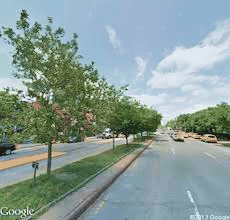
About This Home
Welcome to this charming 3-bedroom, 2 full bath home, nestled in a quiet cul-de-sac offering privacy and comfort. With no homes in front or behind, you'll enjoy a peaceful setting with scenic views and frequent wildlife. The location offers lower county taxes and easy access to highways 40/61 and 70, while being just 6 minutes from Wentzville Parkway’s shopping, dining, and parks. Outdoor activities like fishing and hiking at Indian Camp Creek are nearby as well.Inside, the main floor features a bright, open layout with vaulted ceilings, connecting the living room, kitchen, and dining areas. The kitchen boasts white cabinetry, granite countertops, a center island with breakfast bar, and stainless steel appliances, with the main floor laundry just off to the side. The full basement, framed with an egress window, is ready for finishing, perfect for a future 4th bedroom or additional living space. Most electrical work is already done! Welcome home!
Built in 2015
Price Summary
$226 per Sq. Ft.
Last Updated:
Rooms & Interior
Total Bedrooms:
Total Bathrooms:
Full Bathrooms:
Living Area:
1,237 Sq. Ft.
Architectural Style:
Traditional
Building Area:
Year Built:
Lot Size (Sq. Ft):
Finances & Disclosures
Price per Sq. Ft:
Contact an Agent
Yes, I would like more information from Coldwell Banker. Please use and/or share my information with a Coldwell Banker agent to contact me about my real estate needs.
By clicking Contact I agree a Coldwell Banker Agent may contact me by phone or text message including by automated means and prerecorded messages about real estate services, and that I can access real estate services without providing my phone number. I acknowledge that I have read and agree to the Terms of Use and Privacy Policy.


You are here
Jerome j. day house.
- Location: Moscow Idaho Regional Essays: Idaho Latah County Architect: Jerome J. Day Henry N. Black Types: single-family dwellings Styles: Queen Anne Style Shingle Style Materials: shingle clapboard siding basalt (basic igneous rock) serpentinite cedar (wood)
What's Nearby
Wendy R. McClure, " Jerome J. Day House ", [ Moscow , Idaho ], SAH Archipedia, eds. Gabrielle Esperdy and Karen Kingsley, Charlottesville: UVaP, 2012—, http://sah-archipedia.org/buildings/ID-01-057-0001-02 . Last accessed: September 28, 2024.
Permissions and Terms of Use
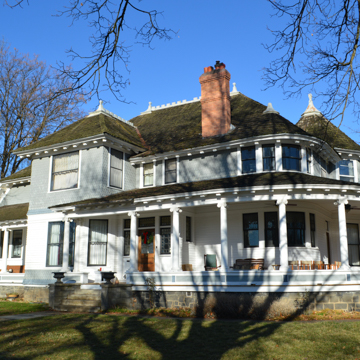
Most of the Fort Russell neighborhood’s grand houses were built by successful entrepreneurs and professionals who acquired their wealth as participants in Moscow’s thriving marketplace economy. The Jerome J. Day House, constructed in 1904, provides a notable exception. As Moscow’s first millionaire, Jerome Day derived his fortune from family-owned silver mines in Wallace, Idaho. Day cemented ties to Moscow by marrying Lucy Mix, daughter of a local orchardist, and completing an education in mining chemistry at the University of Idaho. Day rapidly attained local notoriety by serving as president of Moscow State Bank, as Idaho state senator, and as a member of the University of Idaho’s Board of Regents. His decision to erect one of the city’s grandest residences at a principal intersection in the heart of the Fort Russell neighborhood helped to secure the Day family’s position at the hub of Moscow society.
Day engaged architect Henry Nelson Black to design a Queen Anne mansion to accommodate his family of four and five live-in servants. Black was a Harvard-educated Bostonian who had migrated to Anaconda, Montana, in 1895. Initially he partnered with Frank Longstaff and later established a practice specializing in ecclesiastical architecture. Day likely became acquainted with Black in 1902, when the architect was under contract to design Moscow’s First Methodist Church. In addition to the church and Day House, Black’s Moscow portfolio also includes several of Fort Russell’s most architecturally significant residences. Through these works, Black masterfully executed designs in multiple early-twentieth-century architectural styles using a broad spectrum of available materials.
The Jerome Day House provides a signature example of the Queen Anne style. The two-story house features asymmetrical massing punctuated by multiple bays and turreted roofs. The first story is sided with clapboard while the second features diamond shingles. Unusually large cast-iron finials adorn the roof peaks, further contributing to the house’s grandiose design. A curvilinear wraparound porch supported by Ionic columns serves to maximize the corner lot location and profile its eye-catching design. The porch, which frames the main entry, spans between a two-story square bay on the south side and a two-story hexagonal turreted bay on the east side. The main entrance, which welcomed Moscow’s early elite for frequent social gatherings, is embellished with beveled glass.
The sprawling 24-room house features arguably the most elaborate interior detailing of any residence in the Fort Russell neighborhood. The generously proportioned main-floor living spaces include double parlors, a dining room, full-service kitchen, former servant’s quarters, and a grand staircase leading to numerous second-floor bedrooms. Pairs of Corinthian columns separate the double parlors and dining room from the main entrance hall. The tall ceilings in each living space are capped with deep, highly ornate crown moldings that include egg-and-dart bands and dentil trim. Natural daylight, moderated by the southeast-facing porch, illuminates the lusciously detailed interior front parlor through bowed windows. Ornate, customized chandeliers provide nighttime ambiance. Day’s fascination with state-of-the-art technology was exhibited by use of central vacuum and coal-fired heating systems.
In 1911 Day further expanded the house with the addition of an east-facing library wing with a second-floor ballroom above. Built-in bookcases and wall paneling are of naturally finished milled oak. Light fixtures in the library were reportedly sculpted from silver supplied by the Day family’s Hercules Mine in Idaho’s Silver Valley. The original interior’s rich color palette is best captured in the serpentine marble surrounding the library fireplace and stained maple flooring used throughout the house.
The 1904 Spanish Colonial carriage house represents a curious departure from the Queen Anne main house. The structure’s curved, false-front gables are reminiscent of the Cataldo Mission , Idaho’s oldest extant building. Located near Day’s hometown of Wallace, Idaho, the historic chapel likely served as a source of inspiration. In 1911, the carriage house was relocated to the west side of the property to accommodate the ballroom addition. The motivations behind the decision to also rotate the structure ninety degrees are unclear given current conditions, which obscure its elegant false-front facades. In 1911, however, the new orientation at the crest of a west-facing hill overlooking downtown would have more closely emulated the prominent siting of the Cataldo Mission. With the advent of the automobile, Day adapted the building to house his collection of five motor cars.
Typical of large historic houses in the Fort Russell neighborhood, maintenance costs exceeded financial capabilities of owners during periods of economic downturn. In the 1930s, Day’s daughter, Berniece, converted the ballroom and carriage house into apartments and rented the house’s many bedrooms to university students. Eventually, the house was sold in 1945. Subsequent owners, who lacked sufficient resources to properly maintain the mansion, allowed it to fall into disrepair. In 1977, mining geology professor Peter Siems purchased the mansion for single-family use and pursued its restoration over a twenty-year period. Current owner, Moscow entrepreneur Timothy Kinkeade, who purchased the house in 2002, restored the wraparound porch and continues with rigorous ongoing maintenance of the mansion’s many elegant details and finishes.
David, H. “Moscow at the Turn of the Century.” Moscow, ID: Local History Paper #6, Latah County Historical Society, 1979.
Doyon, Annie, and Kathryn Burke-Hise, “Fort Russell Neighborhood Historic District,” Latah County, Idaho. National Register of Historic Places District Boundary Increase and Additional Documentation, 2015. National Park Service, U.S. Department of the Interior, Washington D.C.
Otness, L. A Great Good Country: A Guide to Historic Moscow and Latah County, Idaho . Moscow, ID: Local History Paper # 8, Latah County Historical Society, 1983.
Voyt, Andrea. “This grand old house : Jerome Day’s Mansion in Moscow relives its glory days.” Lewiston Tribune, July 4, 1993.
Wright, Patricia. “Fort Russell Neighborhood Historic District,” Latah County, Idaho. National Register of Historic Places Registration Form, 1980. National Park Service, U.S. Department of the Interior, Washington D.C.
Writing Credits
- Location: Moscow, Idaho Regional Overviews: Latah County Architect: Henry N. Black Types: single-family dwellings Styles: Queen Anne Style Shingle Style Materials: shingle clapboard siding basalt (basic igneous rock) serpentinite cedar (wood)
If SAH Archipedia has been useful to you, please consider supporting it.
SAH Archipedia tells the story of the United States through its buildings, landscapes, and cities. This freely available resource empowers the public with authoritative knowledge that deepens their understanding and appreciation of the built environment. But the Society of Architectural Historians, which created SAH Archipedia with University of Virginia Press, needs your support to maintain the high-caliber research, writing, photography, cartography, editing, design, and programming that make SAH Archipedia a trusted online resource available to all who value the history of place, heritage tourism, and learning.

46 Magnificent Russian Palaces and Mansions (Photos)
- Pinterest 16.1K
- Facebook 430

Russian palaces are both magnificent and repugnant . They’re magnificent because of their opulence, scale and luxury. They’re repugnant because they’re a reminder of the brutal serfdom that infested the society for hundreds of years.
After all, a lone palace owner couldn’t care for such homes… it required an army of virtual slaves who worked day and night all of their life so that one family could live in luxury. Without a doubt, the famous Russian Wooden palace seen above and below is my favorite Russian palace. The design, craftsmanship and scale is second-to-none.
While most palaces were constructed of brick and stone, the Wooden palace bucked the trend yet does not lack in opulence and splendor. While some of the Russian palaces are unique, most emulate many of the palaces and manor houses built throughout Europe. One distinction though is the influence of Asian design in the architecture.
Sit back and enjoy the splendor from years ago, yet being mindful of the great suffering endured by millions of people to construct and maintain these homes. FYI – I don’t mean to single out Russian monarchs and nobility as the only oppressive system… oppression ruled the day throughout Europe and much of the world. Moreover, while we like to think we’ve come a long way since serfdom, capitalism results in its own form of economic slavery.
1. Catherine Palace

Queen Ekaterina’s residence palace, known as the Catherine Palace is a Rococo architecture located in the town of Tsarskoye Selo, St. Petersburg, Russia. Originally built in 1717 designed by architect Johann-Friedrich Braunstein, the palace originally served as a summer palace for Catherine I of Russia.
About the Catherine Palace
- Where: St. Petersburg, Russia
- Who built it: Catherine I of Russia
- Style: Rococo architecture
- What is it now? Museum
- Current owner: City of St. Petersburg
2. Petrovsky Palace

Designed by the famous Russian architect Matvei Kazakov, Petrovsky Palace was built for Catherine the Great in 1775-1782. The palace remained a royal residence until 1918 before it became the Zhukovsky Air Force Academy. During the late 20th century, the palace was closed for reconstruction and was opened again in 2009 by Moscow Mayor Yuri Lushkov to serve as the House of Receptions of the Government of Moscow.
About the Petrovsky Palace
- Where: Moscow, Russia
- When: 1775-1782
- Who built it: Catherine the Great
- Style: Russian Neoclassical style
- What is it now? House of Receptions of the Government of Moscow
- Current owner: City of Moscow
3. Travel Palace

Emperor Peter the Great’s Travel Palace was built in the 18th century. Located in St. Petersburg, the palace was Peter’s residence during his trips from St. Petersburg to Kronstadt. Currently, it houses a museum maintained by the City of St. Petersburg.
About the Travel Palace
- Who built it: Emperor Peter I
- Style: –
4. Priory Palace

Priory Palace was built in the vicinity of St. Petersburg, on the shore of the “Black Lake”, and was originally constructed to serve for only twenty years, however, it became the former residence of the Russian emperors for several years. It was erected in 1799 following the design of architect Nikolai Alexandrovich Lvov. The design was specially made for the prior of the Maltese Order, but it was presented to the Order of St. John of Jerusalem by a decree of Paul I instead and never became a priory.
About the Priory Palace
- When: 18th century
- Style: Pseudo-Gothic style
- What is it now? Museum / Open to visitors
5. Predjama Castle

A Renaissance castle built within a cave mouth in south-central Slovenia, Predjama Castle was originally designed as a Gothic castle by the Patriarch of Aquileia. The castle then became known as the seat of the knight Erasmus of Lueg, taking the name Luegg from there. It was sieged in the early 16th century and fell into the hands of a few families before it was rebuilt in the Renaissance style.
The castle then served as the favorite summer residences of the Cobenzl family and after the Second World War, it was acquired by the Yugoslav Communist authorities and turned into a museum.
About the Predjama Castle
- Where: Predjama, Slovenia
- When: 13th century
- Who built it: Patriarch of Aquileia
- Style: Gothic style / Renaissance style
- Current owner: Yugoslav Communist authorities
6. Ostankino Palace

Located in Moscow, Ostankino Palace is a former summer residence and private opera theatre of Sheremetev family. It was built by Nikolai Sheremetev and opened the theatre in the summer of 1795. However, Nikolai was summoned by Paul I to Saint-Petersburg in 1796 as one of the highest statesmen.
He had to live most his time in St. Petersburg, so his wife, former actress Praskovya Kovaleva-Zhemchugova took control of the theatre and later on the company was disbanded. Today, the Soviet government claimed the castle and turned it into the National Museum of Serf Art.
About the Ostankino Palace
- Who built it: Nikolai Sheremetev
- Style: Renaissance style
- What is it now? National Museum of Serf Art
- Current owner: Soviet Government
7. Ramon Palace

Located in Ramon, Russia, Ramon Palace, also known as Princess Oldenburg’s Palace is a red-brick neo-Gothic building constructed in 1883-1887 for Duke Alexander Petrovich of Oldenburg and his wife Princess Eugenia Maximilianovna of Leuchtenberg. The couple received the castle from Princess Eugenia’s uncle, Tsar Alexander II as a wedding gift. The Oldenburg family had to abandon the castle as they were forced into exile to avoid the Russian revolution in the early 20th century.
The castle then fell into disrepair and was closed for restoration. It was reopened in 2013.
About the Ramon Palace
- Where: Ramon, Russia
- When: 1883-1887
- Who built it: Duke Alexander Petrovich of Oldenburg and his wife Princess Eugenia Maximilianovna of Leuchtenberg
- Style: Neo-Gothic style
- What is it now? Russian cultural landmark
- Current owner: Private owner
8. Mikhailovsky Palace

The Mikhailovsky Palace in Saint Petersburg, Russia is a grand ducal palace and a great example of Empire style neoclassicism. It was planned to be constructed to serve as Grand Duke Michael Pavlovich’s residence. He was the youngest son of Emperor Paul I.
However, Emperor Paul was overthrown and killed before the Mikhailovsky’s construction had started. Michael’s elder brother assumed Emperor Paul’s throne as Alexander I. At the behest of Alexander I, Mikhailovsky Palace’s construction was planned again, this time, following the design of Carlo Rossi.
The Emperor gave the castle to Grand Duke Michael and his new wife, Grand Duchess Elena Pavlovna as a gift in 1825. Over the years of their residency in the castle, the family made several modifications and improvements to it. In 1894, the palace came into the hands of another family, the Dukes of Mecklenburg-Strelitz upon the death of Grand Duchess Catherine Mikhailovna, Grand Duke Michael’s daughter.
Fearing that the Romanov family might acquire the palace, Emperor Alexander III decided to buy it back. The Mikhailovsky Palace would, later on, become the Russian Museum.
About the Mikhailovsky Palace
- Where: Saint Petersburg, Russia
- Who built it: Alexander I
- Style: Empire style neoclassicism
- What is it now? Russian Museum
- Current owner: City of Saint Petersburg
9. Swallow’s Nest

The Swallow’s Nest is a decorative castle and is one of the most popular visitor attractions in Crimea. This castle replaced the original building at the site, a small wooden cottage of a Russian general. The cottage was passed to A. K.
Tobin, a court doctor to the Russian Tsar. From Tobin, the cottage was bought by Baron von Stiengel, the one who constructed the Neo-Gothic manor that still stands to this day. Constructed on the top of the Aurora cliff overlooking the sea, outside of the town of Gaspra, the Swallow’s Nest was deemed as one of the most wonderful castles and palaces in the world.
About the Swallows Nest
- Where: Crimea, Ukraine
- When: 20th century
- Who built it: Baron von Stiengel
- What is it now? Tourist attraction
- Current owner: Republic of Crimea
10. Kadriorg Palace

A Petrine Baroque palace built for Catherine I of Russia by Peter the Great in Tallinn, Estonia, Kadriorg Palace was constructed in 1718-1725. When Peter died, Catherine showed no interest in the property, however, she still visited the palace sporadically. It was then became the house of the civilian governor of the Governorate of Estonia, and after the declaration of independence of Estonia in 1919, Kadriorg Palace became state property. Today, houses the Kadriorg Art Museum, the branch of the Art Museum of Estonia.
About the Kadriorg Palace
- Where: Tallinn, Estonia
- When: 1718-1725
- Who built it: Peter the Great for Catherine I of Russia
- Style: Petrine Baroque style
- What is it now? Kadriorg Art Museum
- Current owner: Republic of Estonia
11. Gatchina Palace

The Great Gatchina Palace is one of the favorite residences of the Russian Imperial Family. It was designed by Antonio Rinaldi for Count Grigori Grigoryevich Orlov and was built between 1766-1781. It is a UNESCO World Heritage Site museum and its park is open to the public maintained by the Russian government.
About the Gatchina Palace
- Where: Gatchina, Russia
- When: 1766-1781
- Who built it: Count Grigori Grigoryevich Orlov
- Style: Russian classicism style
- What is it now? UNESCO World Heritage Site / Museum
- Current owner: Russian Government
12. Konstantin Palace

Located in Saint-Petersburg, Konstantin Palace was founded by Peter the Great in 1715. It is known as the former residence of grand dukes of the House of Romanovs and the revived monument of the Russian architecture of the 18th century. Before it became a tourist attraction, this palace was the Russian President Vladimir Putin’s residence and will always be known as the “Palace of Putin”.
About the Konstantin Palace
- Where: Saint-Petersburg, Russia
- Who built it: Peter the Great
13. Marienthal Palace

Castle BIP, previously known as Marienthal Palace was the Bastion of Emperor Paul built in 1795 to 1797 following the design of architect C. F. Brenna. It was included in the military register of fortresses of the Russian Empire and in 1807-1810, the castle served as the first Russian School for the deaf. The castle was then neglected after the Second World War, then it was renovated by the Russian government and turned it into a hotel and restaurant.
About the Marienthal Palace
- When: 1795-1797
- Who built it: Emperor Paul
- What is it now? 5-star Hotel and Restaurant
14. Peterhof’s Grand Palace

The Peterhof’s Grand Palace was designed to be the centerpiece of Peter the Greats “Russian Versaille”. Designed by Jean-Baptiste Le Blond, it was built between 1714-1721 at the behest of Peter himself. This Baroque palace is recognized as part of UNESCO World Heritage Site.
About the Peterhof’s Grand Palace
- When: 1714-1721
- Who built it: Jean-Baptiste Le Blond
- Style: Baroque architecture
- What is it now? UNESCO World Heritage Site
15. Maryino Manor

Maryino Manor is one of the most outstanding national monuments of the 19th century built by architect K. Hoffman in 1811-1820. It was the former manor of Prince Baryatinskih and now, it serves as a luxury spa hotel surrounded by a romantic park.
About the Maryino Manor
- When: 1811-1820
- Who built it: architect K. Hoffman
- What is it now? Luxury spa hotel
- Current owner: Unclear
16. Vorontsov Palace

The Vorontsov Palace, also known as the Alupka Palace was built between 1828 and 1848 for Russian Prince Mikhail Semyonovich Vorontsov to serve as his personal summer residence. It was designed by English architect Edward Blore and his assistant William Hunt in Renaissance style. The palace is one of the oldest and largest palaces in Crimea and is one of the most popular tourist destinations on Crimea’s southern coast.
About the Vorontsov Palace
- Where: Alupka, Crimea
- When: 1828-1848
- Who built it: Russian Prince Mikhail Semyonovich Vorontsov
17. Massandra Palace

The Massandra Palace is the Châteauesque villa of Emperor Alexander III of Russia. It was built in the late 19th century designed by French architect Étienne Bouchard in the Louis XIII style at the behest of Mikhail Semyonovich Vorontsov son, Semyon Mikhailovich. When Prince Semyon Mikhailovich Vorontsov died, the palace was bought by the Russian Imperial Domains Agency for Alexander III of Russia, who commissioned his favorite architect Maximilian Messmacher to modify and improve the estate.
Today, it is open for guided tours maintained by the Republic of Crimea.
About the Massandra Palace
- Where: Massandra, Crimea
- When: 19th century
- Who built it: Architect Étienne Bouchard
- Style: Louis XIII style
- What is it now? Tourist attraction / Open for guided tours
18. Winter Palace

The Winter Palace was originally built in 1708 for Peter the Great and his family. This original Dutch-style wooden house was reconstructed for years until the final Baroque version was completed in 1735 by architect Bartolomeo Francesco Rastrelli for Empress Anna. Rastrelli’s design impressed Empress Anna’s successor, Grand Duchess Elizabeth, the daughter of Peter the Great. She commissioned Rastrelli to made improvements and modifications to the castle, in what came to be known as the Elizabethan Baroque style.
This former official residence of the Russian Emperors is now part of the Hermitage art museum.
About the Winter Palace
- Style: Baroque architecture / Elizabethan Baroque style
- What is it now? Hermitage art museum / Open to the public
19. Yelagin Palace

Yelagin Palace was designed by the architect Carlo Rossi for Alexander’s mother, Maria Fyodorovna. It was built in Palladian style architecture during the rule of Catherine the Great and served as a royal summer palace during the reign of Alexander I. When Maria Fyodorovna died, the palace stopped being the residence of the imperial family.
It was deserted for some time until Nicholas II leased it to his prime ministers. Yelagin Palace was reconstructed in the mid 20th century and today, it houses a museum.
About the Yelagin Palace
- Who built it: Architect Carlo Rossi
- Style: Palladian style
20. Wooden Palace of Tsar Alexei Mikhailovich

The wooden palace of Tsar Alexei Mikhailovich was built in 1667 without using any fasten materials, nails or hooks. The palace is divided into two parts, the male and the female parts. The male part houses the ceremonial chambers, chambers of the Tsar and of his sons, while the female part belonged to the Tsarina and to the Tsar’s daughters.
This palace was rebuilt after Alexei Mikhailovich died. It gradually fell into decay during the 18th century and in Catherine the Great’s reign, the Empress ordered its demolition, however, it is already in ruined form. Two centuries later, the Russian government ordered its reconstruction and was turned into a museum.
About the Wooden Palace of Tsar Alexei Mikhailovich
- Who built it: Tsar Alexei Mikhailovich
21. Izmailovsky
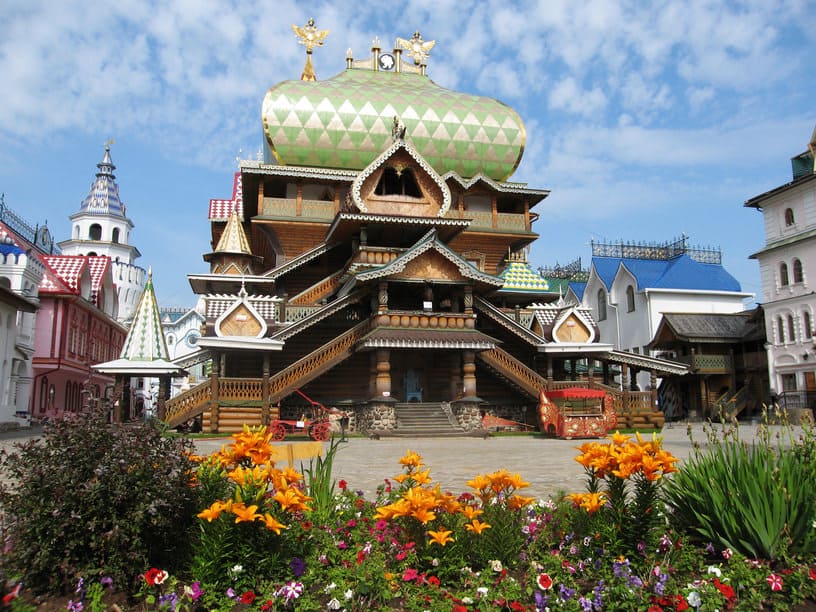
Kremlin literally means “fortress” or “citadel” in Russian. However, Izmailovsky Kremlin wasn’t built to serve as a defensive fortress but as a cultural and entertainment complex. This complex was completed in 2007 and includes a replica of the wooden summer palace of Tsar Alexei Mikhailovich, together with other 18th century Russian architectures.
Izmailovsky Kremlin houses multiple museums that are open to the public.
About the Izmailovsky
- Who built it: Unclear
22. Tsaritsyno Palace

A palace museum and park reserve in the south of Moscow, Tsaritsyno Palace was founded in 1776 by the order of Catherine the Great. Commissioning the greatest Russian architect Vasily Bazhenov, this Pseudo-Gothic summer home of Catherine the Great was never completed and remained untouched for more than 200 years after the Empress died. It was completed in 2005-2007 after extensive rebuilding was done.
Today, it houses a museum maintained by the Tsaritsyno Museum Reserve.
About the Tsaritsyno Palace
- Current owner: Tsaritsyno Museum Reserve
23. Moscow Kremlin

The Moscow Kremlin was originally built in 1156, but this building no longer exists today. The oldest surviving building of the Kremlin dates back from the 14th century and was rebuilt in red bricks by the Italian architects in the following century. It has been remodeled numerous times and its various architectural styles include Byzantine, Russian Baroque, and classical styles.
During the reign of the Soviet Union, Moscow Kremlin served as the headquarters of Vladimir Lenin and the Soviet government. After the Soviet Union’s collapse in 1991, it became the executive headquarters of the Russian Federation. Kremlin is part of the UNESCO World Heritage Site.
About the Moscow Kremlin
- When: 14th century
- Who built it: Unknown
- Style: Byzantine style / Russian Baroque architecture / Russian classicism style
- What is it now? UNESCO World Heritage Site / Executive headquarters of the Russian Federation
24. Smolny Palace

The Smolny Palace was originally built in 1708 for Peter the Great and his family. This original Dutch-style wooden house was reconstructed for years until the final Baroque version was completed in 1735 by architect Bartolomeo Francesco Rastrelli for Empress Anna. Rastrelli’s design impressed Empress Anna’s successor, Grand Duchess Elizabeth, the daughter of Peter the Great. She commissioned Rastrelli to made improvements and modifications to the castle, in what came to be known as the Elizabethan Baroque style.
About the Smolny Palace
25. Sevastyanov’s House

Sevastyanov’s House was originally built in 1817, however, when Nikolay Sevastyanov, a successful businessman acquired the castle, he put almost all his wealth onto the house’s extension and decoration. He commissioned architect A. I. Paduchev to combine the Moorish and Gothic styles and the result of the work was the stunning Sevastyanov`s House.
Sevastyanov owned the house until 1880 when he was promoted and had to move to Saint Petersburg. He sold his house to the treasury and then it was acquired by the district court, Commissariat for labor and trade unions. In 2008, it became the Residence of the President of the Russian Federation in Yekaterinburg until 2010 and now, the house’s purpose and owner are still unclear.
About the Sevastyanov’s House
- Where: Ekaterinburg, Russia
- Who built it: Nikolay Sevastyanov
- Style: Gothic style/Moorish architecture
- What is it now? Unclear
26. Pavlovsk Palace

Pavlovsk Palace was built at the behest of Catherine the Great for her son, Grand Duke Paul and his wife, Maria Feodorovna. When the Empress died, Paul succeeded her throne and decided to expand the Pavlovsk into a palace suitable for a royal residence. When Emperor Paul died, Empress Maria continue living in the palace.
She died in 1828 two weeks after her 67th birthday. The palace was given to her younger son, Michael and from there, it was succeeded by Konstantine Konstantinovich, who made it clear in his last will that the palace must be turned into a family museum. The successors respected his final will and the palace was turned into a museum.
About the Pavlovsk Palace
- Where: Saint-Petersburg, Russia
- Who built it: Catherine the Great
- Style: Palladian architecture
- What is it now? Russian State Museum and Public Park
27. Pashkov House

A neoclassical mansion that stands on a hill overlooking the western wall of the Moscow Kremlin, Pashkov House was built in 1784—1786 by a Muscovite nobleman, Pyotr Pashkov. Believed to be designed by Vasili Bazhenov, Its classicism style are so magnificent that it became a landmark of Moscow as soon as it was completed. The house served as home to the Rumyantsev Museum, Moscow’s first public museum in the 19th century.
Today, it is under the care of home to the Russian State Library.
About the Pashkov House
- When: 1784-1786
- Who built it: Muscovite nobleman, Pyotr Pashkov
- Style: Classicism style
- What is it now? Office of the Russian State Library
- Current owner: Russian State Library
28. The Opera House

Bazhenov’s Opera House was built by Vasily Bazhenov himself in 1776-1778. One of the three buildings in Tsaritsyno that the architect designed, Opera House was the middle one, or the medium palace that the Russian Empress Catherine II had commissioned. Currently, it is part of the Tsaritsyno park and museum that are being managed by the Tsaritsyno Museum Reserve.
About the Opera House
- When: 1776-1778
- Who built it: Vasily Bazhenov
- What is it now? Tsaritsyno park and museum
- Current owner: Tsaritsyno Museum Reserve
29. Kuskovo Palace

Built in the mid-18th century, Kuskovo was the summer country house and estate of the Sheremetev family. The palace was commissioned by Petr Borisovich Sheremetev, the son of Boris Petrovich Sheremetev, a Russian Field Marshal directly under Peter the Great. This Neoclassical beauty was one of the first great summer country estates of the Russian nobility and today, it serves as the home of the Russian State Museum of Ceramics.
About the Kuskovo Palace
- Who built it: Petr Borisovich Sheremetev
- Style: Neoclassical style
- What is it now? Home of the Russian State Museum of Ceramics
- Current owner: Russian State Museum of Ceramics
30. House of the Unions

The House of the Unions, also known as Palace of ‘the Unions was constructed by Russian architect Matvey Kazakov in 1784 and 1787. The Moscow Assembly of the Nobility, the group who commissioned Kasakov wanted the house to serve as a Ball venue for the Russian nobility. The house acquired its name from the Moscow Council of Trade Unions when it was assigned to them after the October Revolution.
About the House of the Unions
- Who built it: Architect Matvey Kazakov
- What is it now? Concert venue
31. Oranienbaum

Located on the Gulf of Finland west of St. Petersburg, Oranienbaum is a Russian royal residence built in the 18th century. Aleksandr Danilovich Menshikov, the right-hand man of Peter the Great commissioned the same architects who built his official residence, The Grand Menshikov Palace, architects Giovanni Maria Fontana and Gottfried Schädel to construct the Oranienbaum. Menshikov died in exile shortly after the death of Peter.
The ownership was passed onto Grand Duke Peter Fedorovitch, the heir of Empress Elizabeth as his summer residence. During this time, Bartolomeo Francesco Rastrelli remodeled the Oranienbaum in Baroque architecture.
About the Oranienbaum
- Who built it: Aleksandr Danilovich Menshikov
- What is it now? Historical Center of the Town of Lomonosov / UNESCO World Heritage Site
- Current owner: Town of Lomonosov
32. Petrovsky Travellers Palace

The Petrovsky Travellers Palace was designed in the Russian gothic style by the architect Matvey Kazakov. Kazakov built it in the late 18th century for Empress Catherine the Great to serve as her imperial residence when traveling from St Petersburg to Moscow. Today, the palace is converted into a luxury hotel called Petroff Palace Hotel.
About the Petrovsky Travellers Palace
- Who built it: Architect Matvey Kazakov
- Style: Russian Neo-Gothic style
- What is it now? Petroff Palace Hotel
33. Nikolay Durasov’s Palace
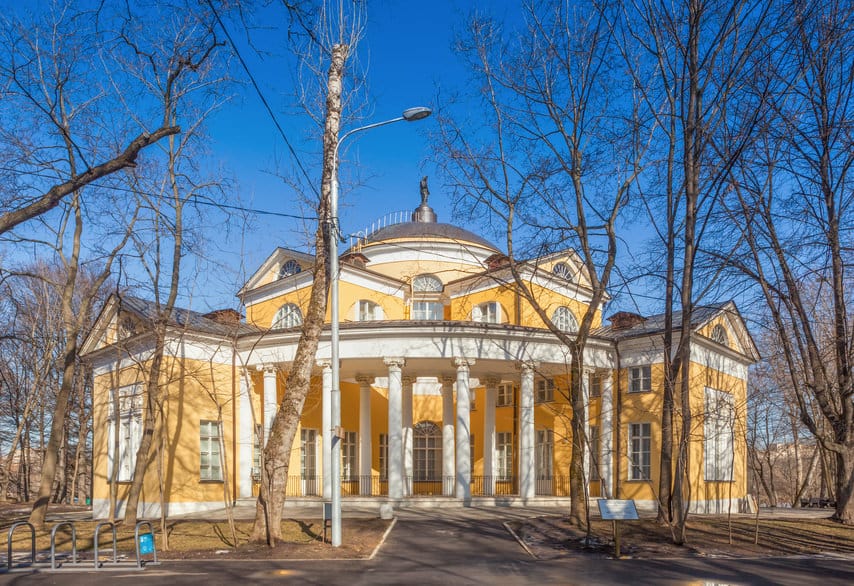
Nikolay Durasov’s palace in Lyublino was originally built by a famous Godunov family in the 1680s. The palace was named after the owner’s family name, but later on, renamed to Lyublino by the next owners. It was reconstructed in the 18th century by the French architect Jean-Francois Neufforges, however, when the estate came into the ownership of Nikolay Durasov, it was once again remodeled and fully reconstructed into his own palace in the 19th century.
About the Nikolay Durasov’s Palace
- Who built it: Nikolay Durasov
34. Menshikov Palace

Menshikov Palace is a Petrine Baroque edifice in Saint Petersburg was founded in 1710 to serve as a residence of Saint Petersburg Governor General Alexander Menshikov. It was designed by two architects, first was the Italian architect Giovanni Maria Fontana then followed by German architect Gottfried Johann Schädel. It is now open to the public as a branch of the Hermitage Museum.
About the Menshikov Palace
- When: 1710-1727
- Who built it: Governor General Alexander Menshikov
- What is it now? Open to the public
35. T he Chinese Palace
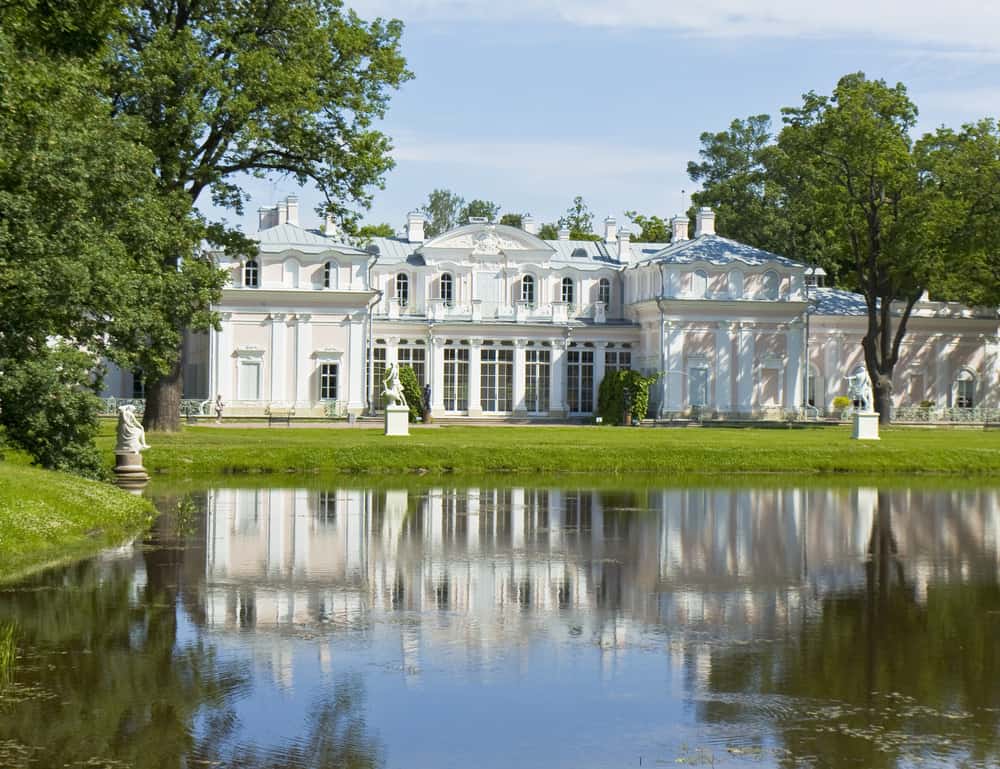
The Chinese Palace is situated inside the Oranienbaum of Aleksandr Danilovich Menshikov in Lomonosov. This building was designed and built by Antonio Rinaldi between 1762 and 1768 following the order by Catherine the Great. It features a mix of Baroque architecture, Classicism style, and Chinese motifs.
About the Chinese Palace
- Who built it: Antonio Rinaldi
- Style: Baroque architecture / Classicism style / Rococo architecture
36. T he Katalnaya Gorka Pavilion

The Katalnaya Gorka Pavilion is part of the Oranienbaum by Aleksandr Danilovich Menshikov and was built at the behest of Catherine the Great in the 18th century. The building was renovated in Baroque architecture magnificently after it suffered some damages during the Second World War.
About the Katalnaya Gorka Pavilion
37. Livadia Palace

Livadia Palace served as the summer retreat of the last Russian tsar, Nicholas II, and his family in Livadiya, Crimea. It was built by architect Ippolito Monighetti in Italian Renaissance style where the Yalta Conference was held, hosting the dying US president Franklin Roosevelt and British prime minister Winston Churchill along with Premier Joseph Stalin in 1945. Today, the palace serves as a museum, but sometimes used as the venue for international summits.
About the Livadia Palace
- Where: Livadiya, Crimea
- Who built it: Ippolito Monighetti
- Style: Italian Renaissance style
- What is it now? Museum / Venue for international summits
38. Izmaylovo Estate

Izmaylovo Estate served the House of Romanov as their country residence and was built during the reign of Alexis I of Russia. The Izmailovo Court of Tsar Alexis was a wooden palace built on an artificial island served as the heart of the estate. The other structures of the Court were built by Konstantin Thon and Mikhail Bykovsky in 1839–1859.
Currently, the court of the estate operates as a freely accessible open-air museum.
About the Izmaylovo Estate
- When: 17th century
- Who built it: Alexis I of Russia
- What is it now? Open-air museum
39. Hermitage Pavillion

The Hermitage Pavillion in Saint Petersburg was originally built in Peterhof at the behest of Peter the Great. It was designed and constructed by Johann Braunstein in 1721 to serve as an informal dining room for his closest associates. The building was completed shortly after Peter’s death.
Today, the Pavillion serves as a museum.
About the Hermitage Pavillion
40. Griboedov Mansion

Griboedov Mansion came into the possession of Semyon Griboyedov at the end of the 17th century. It was formerly owned by the princely Buinosov-Rostovsky family during the 16th century. The property was then passed onto Fyodor Griboyedov who made a few remodeling in the estate and turned it into the present Baroque-style mansion.
Today, the mansion is open to the public owned by the Russian government.
About the Griboedov Mansion
- Where: Smolensk, Russia
- Who built it: Reconstructed by Fyodor Griboyedov
41. Gorki Leninskiye

Gorki Leninskiye belonged to various Muscovite noblemen from the 18th century until it was acquired by Zinaida Morozova, the widow of Savva Morozov in 1909. Zinaida commissioned Russian architect, Fyodor Schechtel to remodel the estate into a Neoclassical style, which is the present form of the property. Gorki Leninskiye was nationalized after the Soviet government moved to Moscow in 1918.
It was then converted into Vladimir Lenin’s dacha and lived there until his death in 1924.
About the Gorki Leninskiye
- When: Unknown / Remodeled in the 20th century
- Who built it: Remodeled by Zinaida Morozova
- What is it now? State Museum-Reserve
42. Goncharov Estate

The Goncharov Estate’s construction was started in the 1780s by Aleksandr Zagryazhsky and his wife, Yekaterina. The estate was inherited by Aleksandr and Yekaterina’s granddaughter, Natalia, who later on married Nikolai Afansievich Goncharov. The property then carried Nikolai’s name and since then it was called the Goncharov Estate successively owned by the Goncharov family until it was confiscated from them by the Russian state.
Currently, the estate now houses a sanatorium while its grounds are open to the public.
About the Gontcharov Estate
- Who built it: Aleksandr Zagryazhsky
- What is it now? Sanatorium
43. Arkhangelskoye Palace

A historical estate in Krasnogorsky District, Arkhangelskoye Palace was built in the 18th century and belonged to the Golitsyn family. It was designed in a neoclassical style by Jacob Guerne. Today, Arkhangelskoye is a popular tourist attraction and cultural events venue maintained by the Russian government.
About the Arkhangelskoye Palace
- Who built it: Golitsyn family
- What is it now? Tourist attraction / Cultural even ts venue
44. Durbes Castle

A Neoclassical manor house located in Tukums, Latvia, Durbe Manor is one of the most interesting classical manor houses in Latvia and was built in the 18th century. Ernst Karl Philip von Grothus used the manor as his summerhouse and from 1818 to 1838 the estate belonged to Count Medem who made major constructions to the property. It was then succeeded by a few nobles before it was acquired by famous Latvian writer and playwright Rainis.
Later on, the manor became part of Tukums city museum exhibition.
About the Durbes Castle
- Where: Tukums, Latvia
- Current owner: City of Tukums
45. Dubrovitsy Estate

The Dubrovitsy Estate was built in 1627, however, the house was constructed by Prince Boris Golitsyn’s grandson Sergey Alekseevich between 1750 and 1753. It was owned by the Morozov, Golitsyn, Potyomkin and Dmitriev-Mamonov noble families successively. The estate is famous for its Church of the Sign of the Most Holy Mother of God designed in European Baroque style, a rare sight to be seen in Russian architectural history.
About the Dubrovitsy Estate
- Where: Podolsk, Russia
- Style: European Baroque style
- What is it now? Church – open to the public
46. Arseny Morozov Mansion

Located in Moscow, Russia, Arseny Morozov House is inspired by the famous Pena National Palace in the Portuguese town of Sintra. It was built in 1895-1899 following the combination of Spanish-Moorish medieval architecture along with Manueline style by architect Victor Mazyrin for Arseny Abramovich Morozov. Today, it serves as the Reception House of the Government of the Russian Federation.
About the Arseny Morozov Mansion
- When: 1895-1899
- Who built it: Arseny Abramovich Morozov
- Style: Spanish-Moorish architecture / Manueline style
- What is it now? Reception House of the Government of the Russian Federation
Related Posts

Relaxing House in Vilnius by Aketuri Architektai

Breathtaking Mill Street House by Moloney Architects

Cherry Hills Charmer Project By Andrea Schumacher Interiors

Featuring “The Barn House” in Corfu, Greece (Villa Designed by USP Architects)

1823 Soho Townhome

The Exclusive Living Cube Project by Living Cube Furniture
What are you looking for.

McConnell Mansion Historic House Museum
Located in Moscow's historic Fort Russell neighborhood, the McConnell Mansion (at 110 South Adams Street ) is an architectural and historic landmark. William J. McConnell, leading merchant, prominent Republican, and Idaho Governor from 1887 to 1893, built the house in 1886. On the main floor of the house are historic rooms interpreted in different time periods from 1900 to the 1930s. The second floor contains the restored master bedroom and exhibits, including hands-on activities for young visitors. During warm weather, visitors are invited to relax and enjoy refreshments in the backyard garden. The Museum Store carries books on local history, notecards from area artists, and more.
Staffed by a corps of volunteers, the museum is open Tuesday through Friday, and some Saturdays dependent on volunteer availability, from 1:00 p.m. to 4:00 p.m. and for special events. Please call or email to verify Saturday hours.


COMMENTS
Public Tours are held on Mondays at 10:30AM, 12:00PM, and 1:30PM. Avai...
Gracie Mansion is the official residence of the Mayor of New York City, Eric Adams. Learn about its history, events, tours, and how to support the conservancy that preserves and enhances this historic landmark.
To schedule a private group tour or school tour you can do it online or email us at: [email protected]. About Our Public Tours -Tour reservation is $10 per attendee -Tours are open for ages 10 and up -Public tours are held on select Mondays at 10:30 am, 12:00 pm, and 1:30pm. -Please be aware of your registration date.
Gracie Mansion is the official residence of the Mayor of New York City and a historic landmark. Learn about its history, take a tour, or support the Gracie Mansion Conservancy that preserves and enhances the house and its grounds.
Learn about the history and significance of Gracie Mansion, the official residence of New York City's Mayor since 1942. Explore the Federal Period architecture, the permanent collection, and the public tours of this living landmark.
There are guided tours of the Gracie Mansion on Mondays, costing $10 and supposedly lasting around an hour although it was an hour and a half on the day I went, probably because the guide, whilst very nice and engaging, did talk rather a lot! ... Gracie Mansion, residence of the mayor of New York, may not be on the top 20 list of attractions to ...
Join a free behind-the-scenes tour of the historic home of NYC's mayor on August 7th, 2019. See the interior spaces, the art installation She Persists, and learn about the history of Gracie Mansion.
Gracie Mansion is a historic home built in 1799 and renovated by Mayor Bloomberg as a museum of New York City history. Learn about the city's immigrant experience, ethnic diversity, global commerce and the Mayor's vision on a free guided tour.
A tour of the curated reinstallation of Gracie Mansion's official rooms on the 25th anniversary of the Gracie Mansion Conservancy.Subscribe to our channel: h...
According to a Gracie Mansion tour guide, Leonard Bernstein even once played the historic piano that is located in the corner of the yellow room. 9. Gracie Mansion Used to be Much Smaller.
Gracie Mansion. place. East End Ave, Manhattan, NY, 10128. View Website call_made. ... Attractions & Tours. Coney Island. Coney Island. Brooklyn's beachside attraction holds the Cyclone roller coaster, the Wonder Wheel, the New York Aquarium, the original Nathan's Famous and a boardwalk.
Learn about the origins, transformations, and current uses of Gracie Mansion, the official residence of New York City mayors since 1942. Explore the historic house, its collection of fine and decorative arts, and the role of the Gracie Mansion Conservancy in its preservation and enhancement.
Take a behind-the-scenes tour inside Gracie Mansion, NYC's "White House" and see the new exhibition, Catalyst: Art and Social Justice, curated by first lady, Chirlane McCray.
Gracie Mansion (also Archibald Gracie Mansion) is the official residence of the mayor of New York City. ... In addition to governmental business and special events, Gracie Mansion hosts public tours. Over the years, the house has been the subject of commentary, and it has also received accolades and has been depicted in numerous media works.
Gracie Mansion is the official residence of the Mayor in New York City. Built in 1799, it is located in Carl Shurz Park, at East End Avenue and 88 th Street in the Yorkville section of Manhattan.. You can make a reservation for a tour of Gracie Mansion.
your tour? Gracie Mansion's historic Dining Room. A portrait of Mayor La Guardia at his desk at City Hall by Samuel Cork Pilot by an unidentified artist, circa 1830. J. Woolf, circa 1945. William Waldron The Foyer of Gracie Mansion in the 1920s, when it was the first home of the Museum of the City of New York. The Gracies move A rchibald ...
Explore the historic home of New York City mayors with public, group, tea, or school tours. Book your experience online and get updates on special events and exhibitions at Gracie Mansion.
The grand, yellow Gracie Mansion is located on the corner of East 88th Street and East End Avenue. It was built in 1799. Gracie Mansion has been the official residence of New York City mayors ...
The FBI appears to be conducting a search of Gracie Mansion, the official home of New York City Mayor Eric Adams, on Thursday, according to video from WNBC, NBC News and multiple people familiar ...
The FBI is conducting a search of Gracie Mansion, the official home of New York City Mayor Eric Adams, on Thursday, according to video from WNBC, NBC News and multiple people familiar with the matter.
Such collecting spread and accelerated in 1981, when Mayor Edward I. Koch ((1924-2013) created the Gracie Mansion Conservancy as the nonprofit partner to restore the landmark structure and ...
People exit Gracie Mansion, the official residence of New York City Mayor Eric Adams, Thursday, Sept. 26, 2024, in New York. (AP Photo/Yuki Iwamura) Share. ... Adams offered reporters a tour of a basement apartment in the Bedford-Stuyvesant neighborhood in Brooklyn that he said was his primary residence.
TOURS OF GRACIE MANSION 1942 PUBLIC TOURS Join us for free guided tours offered on select Tuesdays at 10:00am, 11:00am, 2:00pm, and 3:00pm.* Reserve /Full Calendar online at the Gracie Mansion Conservancy website NYC.GOV/GRACIETOURS SCHOOL TOURS Educators planning a visit are encouraged to take full advantage of the new
100 Gracie Claire Ct, Moscow Mills, MO 63362 is a 3 bed, 2 bath, home in Moscow Mills, Missouri and is currently listed for sale at $280,000 with MLS #24060891. ... There are currently no open houses for 100 Gracie Claire Ct. Schedule a private tour and view this property.
On Thursday, just as the charges against him were being unsealed, he held a rally outside Gracie Mansion with Black clergy and civic leaders, some of whom helped lay the groundwork for his career.
Find Property Information for 100 Gracie Claire Court, Moscow Mills, MO 63362. MLS# 24060891. View Photos, Pricing, Listing Status & More.
In 1977, mining geology professor Peter Siems purchased the mansion for single-family use and pursued its restoration over a twenty-year period. Current owner, Moscow entrepreneur Timothy Kinkeade, who purchased the house in 2002, restored the wraparound porch and continues with rigorous ongoing maintenance of the mansion's many elegant ...
Gracie Mansion - NYC.gov
Tourist attraction / Open for guided tours; Current owner: Republic of Crimea; 18. Winter Palace. ... A neoclassical mansion that stands on a hill overlooking the western wall of the Moscow Kremlin, Pashkov House was built in 1784—1786 by a Muscovite nobleman, Pyotr Pashkov. Believed to be designed by Vasili Bazhenov, Its classicism style are ...
McConnell Mansion Historic House Museum. Located in Moscow's historic Fort Russell neighborhood, the McConnell Mansion (at 110 South Adams Street) is an architectural and historic landmark. William J. McConnell, leading merchant, prominent Republican, and Idaho Governor from 1887 to 1893, built the house in 1886. ... TOURS. ADMISSION. RENTALS ...